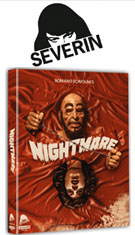
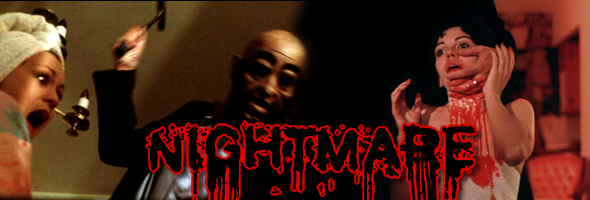
Color, 1981, 99 mins. 10 secs.
Directed by Romano Scavolini
Starring Baird Stafford, Sharon Smith, C.J. Cooke, Mik Cribben, Danny Ronan
Severin Fims (UHD & Blu-ray) (US R0 4K/HD) / WS (1.85:1) (16:9), 88 Films (Blu-ray & DVD) (UK R0 HD/PAL), NSM Records (Blu-ray & DVD) (Germany R0 HD/NTSC), Code Red (Bu-ray & DVD) (US R0 HD/NTSC) / WS (1.78:1) (16:9), Italian Shock (Holland R0 PAL)
The 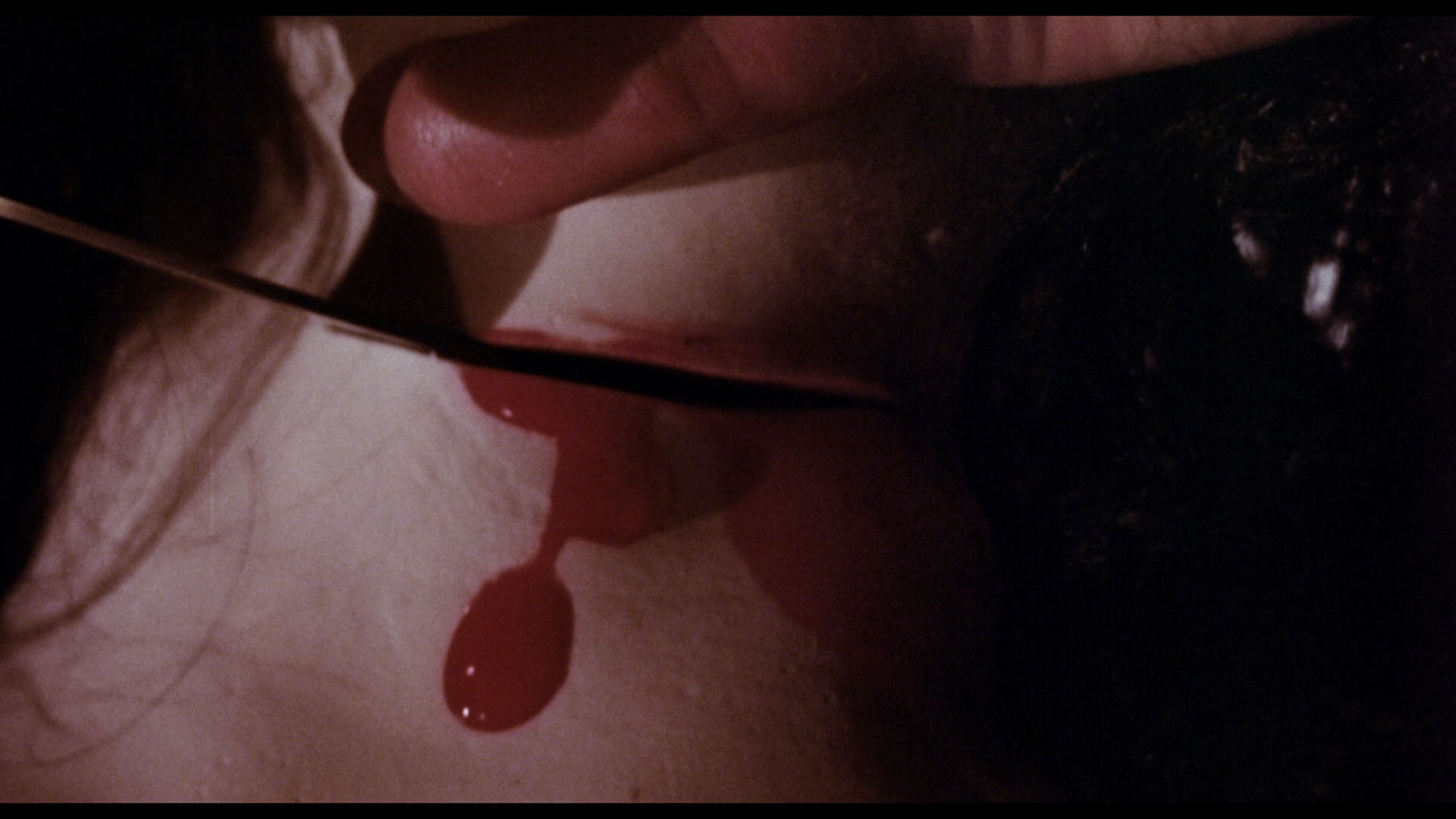 kind of film no one would ever believe actually played in mainstream theaters in the
kind of film no one would ever believe actually played in mainstream theaters in the 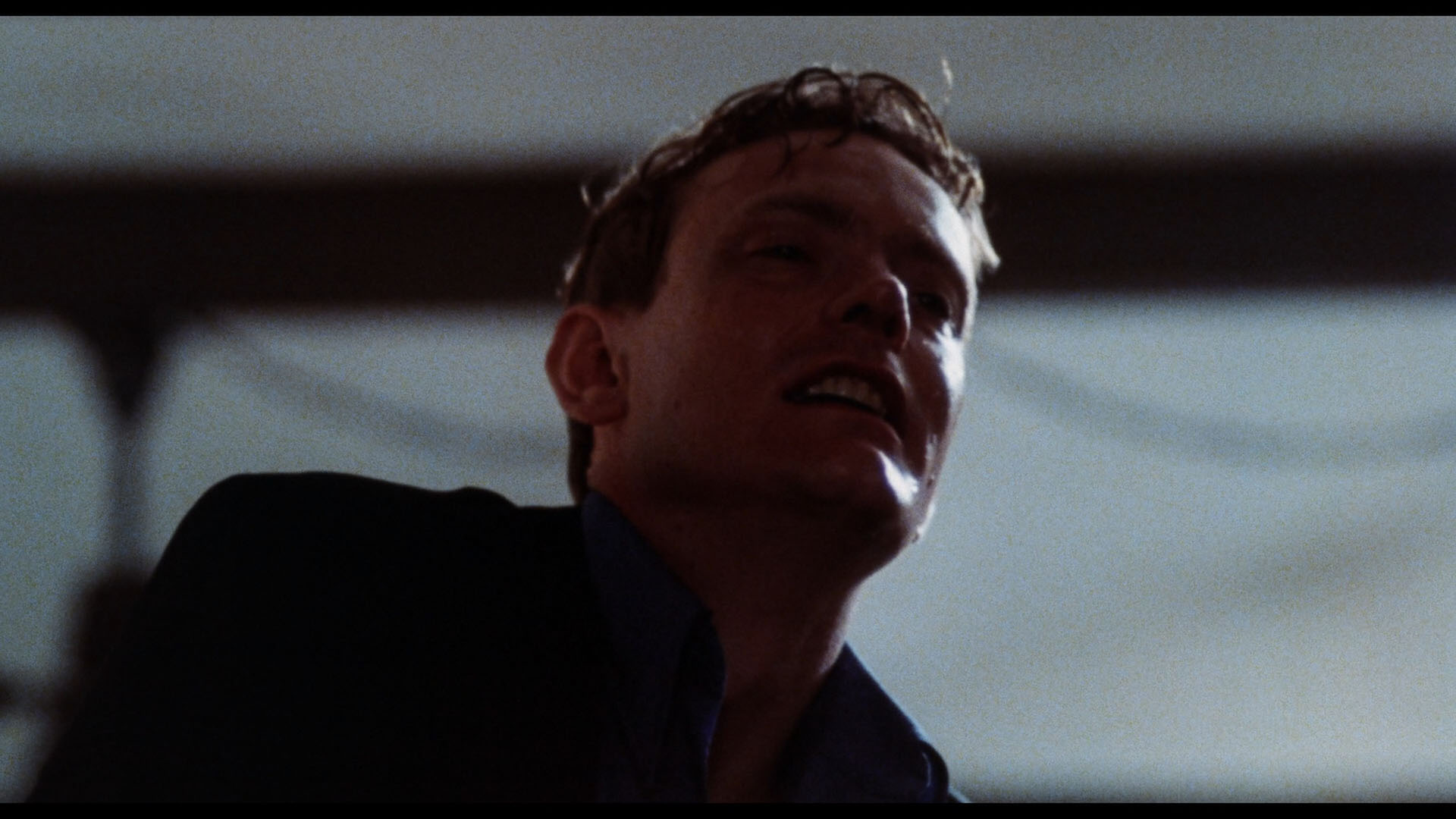 early '80s, Nightmare is one of the more infamous unrated gore films released in the wake of George Romero's successful Dawn of the Dead. Bill Lustig's Maniac cleaned up in 1980 thanks to its vicious Tom Savini effects, so the following year (alongside fare like The Prowler and The Burning), lowbrow distributor 21st Century Film Corporation unleashed this sick puppy with Savini's name plastered all over the posters tying him in with Dawn of the Dead and Friday the 13th. Unfortunately, as Savini himself quickly pointed out, he didn't work on the film apart from offering a few tips to the FX guys on the set, so his name was covered up by theater owners reportedly to avoid a lawsuit. The film was later reissued in an R-rated version with some of its nastiest highlights trimmed out, while the subsequent VHS version (complete with a very bloody cover) restored the X-rated violence while losing some incidental dialogue and other footage to fit the feature on a shorter VHS cassette with previews.
early '80s, Nightmare is one of the more infamous unrated gore films released in the wake of George Romero's successful Dawn of the Dead. Bill Lustig's Maniac cleaned up in 1980 thanks to its vicious Tom Savini effects, so the following year (alongside fare like The Prowler and The Burning), lowbrow distributor 21st Century Film Corporation unleashed this sick puppy with Savini's name plastered all over the posters tying him in with Dawn of the Dead and Friday the 13th. Unfortunately, as Savini himself quickly pointed out, he didn't work on the film apart from offering a few tips to the FX guys on the set, so his name was covered up by theater owners reportedly to avoid a lawsuit. The film was later reissued in an R-rated version with some of its nastiest highlights trimmed out, while the subsequent VHS version (complete with a very bloody cover) restored the X-rated violence while losing some incidental dialogue and other footage to fit the feature on a shorter VHS cassette with previews.
That's nothing compared to what happened when the film came out in the United Kingdom under the title Nightmares in a Damaged Brain, complete with a grisly marketing campaign asking theater patrons to guess the weight of a brain floating in a jar of liquid. Despite cuts mandated by the BBFC, it still got branded as a video nasty and became one of that period's most legendary persecuted titles. (You can see the amazing British trailer for the film here.) The poor distributor got thrown in jail for showing a version longer than the approved cut, the film was banned, and one of the most shameful chapters in film censorship was in full swing.
So, what's the actual film about? Well, if you've seen any of the stronger '80s splatter classics, this should seem like pretty familiar ground. A mental patient named George (Stafford) suffers from horrible nightmares including a heck of a curtain raiser involving a severed woman's head in his bed. After undergoing experimental treatment he's unleashed into the public, so he hightails it to Times Square to look at some real life boobies and collapse into a foaming wreck in the corner of the room. Eventually he's on a slashing rampage and failing to check back in with his shrinks as as he stalks a young single mom, Susan (Smith), and her three kids as they head down the coast to Florida, setting the stage for a home invasion showdown.
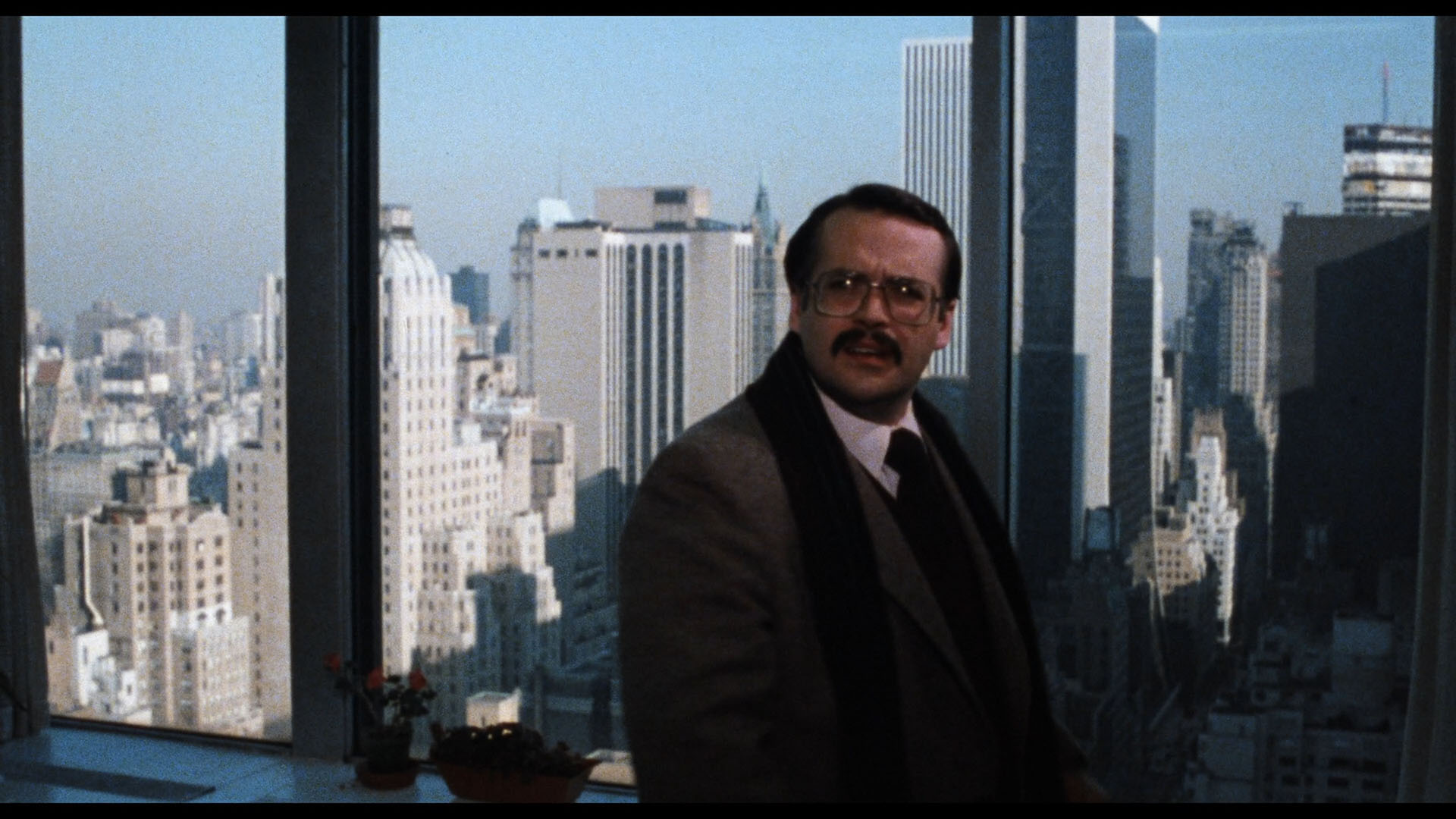 God, this movie is so, so filthy. The gore scenes are mostly unconvincing and the sex couldn't be more unsavory (including a pivotal kinky flashback no viewer has ever forgotten), but that hardly matters when the end product still feels so grimy and unhealthy from the opening frames. You'll want to keep a Costco-sized vat of Purel handy while viewing this thing, but at least there's a hefty vein of unintentional comedy running through it as well thanks to Italian-born director Romano Scavolini's odd view of American culture. (And if you wanna see something almost as trashy, try tracking down his perverse spy thriller from the previous
God, this movie is so, so filthy. The gore scenes are mostly unconvincing and the sex couldn't be more unsavory (including a pivotal kinky flashback no viewer has ever forgotten), but that hardly matters when the end product still feels so grimy and unhealthy from the opening frames. You'll want to keep a Costco-sized vat of Purel handy while viewing this thing, but at least there's a hefty vein of unintentional comedy running through it as well thanks to Italian-born director Romano Scavolini's odd view of American culture. (And if you wanna see something almost as trashy, try tracking down his perverse spy thriller from the previous 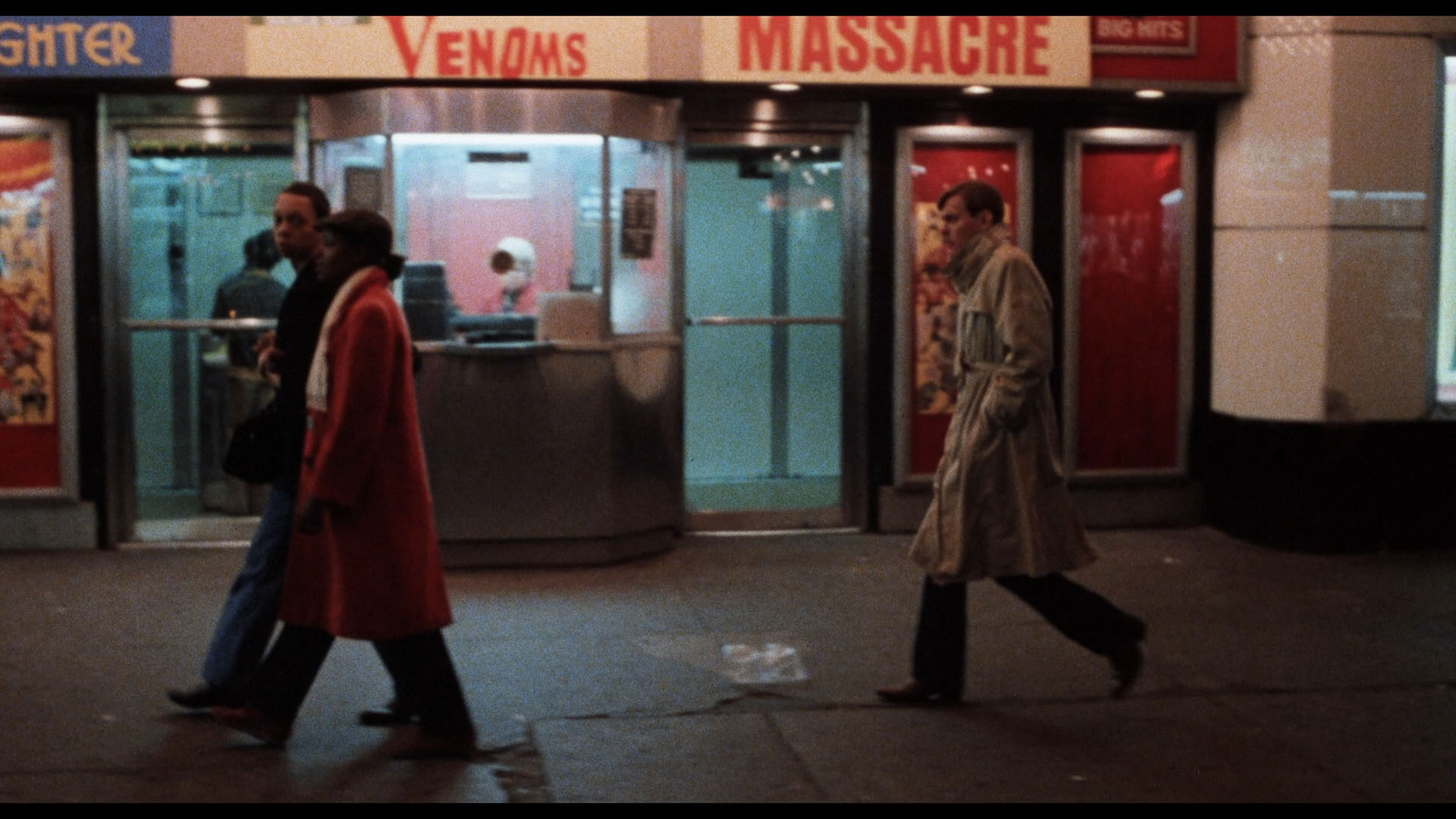 year, Savage Hunt.) None of the mental health professionals behave like anything found in English-speaking society, and the police procedures were apparently pulled from the same playbook as Pieces (which, come to think of it, would make a great co-feature). And like another famous slasher film, When a Stranger Calls, it's oddly structured and basically drops dead for the entire midsection, which turns into a wacko domestic drama ramping up for a very long time before the eventual bloody payoff. The slasher setup itself tries and tries to emulate Halloween, of course, but the end result is much more H.G. Lewis than John Carpenter... which isn't a bad thing at all if your expectations are calibrated correctly.
year, Savage Hunt.) None of the mental health professionals behave like anything found in English-speaking society, and the police procedures were apparently pulled from the same playbook as Pieces (which, come to think of it, would make a great co-feature). And like another famous slasher film, When a Stranger Calls, it's oddly structured and basically drops dead for the entire midsection, which turns into a wacko domestic drama ramping up for a very long time before the eventual bloody payoff. The slasher setup itself tries and tries to emulate Halloween, of course, but the end result is much more H.G. Lewis than John Carpenter... which isn't a bad thing at all if your expectations are calibrated correctly.
The saga of Nightmare's path to an American DVD release is a long, complicated story winding through years of rumors, distributors, and film element issues, with the title eventually landing in the laps of Code Red and becoming one of their first titles to be announced via trailers included on some of their earlier releases. The wait for an actual release proved to be years in the making, however, and the tribulations could be found looking at the end result as it features no less than three different transfers of the main feature. Disc one contains a "bonus 2008 Hi-Def master... created from the two best 35mm prints," which you can pretty much skip as it's riddled nonstop with damage and debris and ranks as the least satisfying option. More interesting is the "full frame color corrected telecine (2005)," which is (sort of) open(er) matte but cropped a bit on the sides; it looks much cleaner but in terms of detail and color is pretty dreary, though at least this is an approximation (albeit a sharper one) of the grungy, full frame experience many fans first encountered back in the VHS days. The best version by a long shot is the "brand new 2011 telecine" found on the second disc (amusingly pressed to look like a bootlegged DVD-R copy, but don't worry, it is an actual pressed disc). This transfer looks great; apart from a few minor issues like a 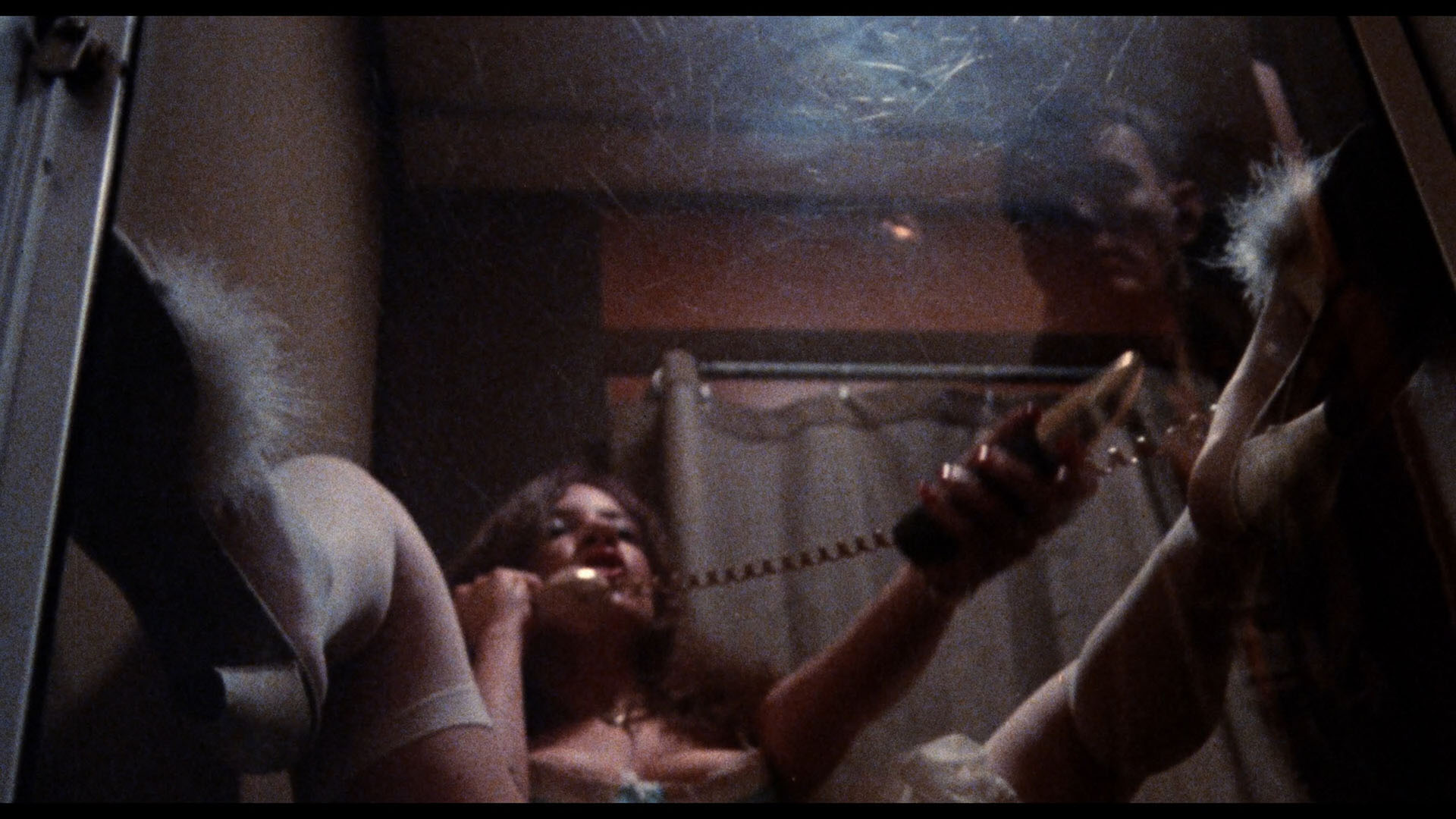 slightly bumpy reel change here and there, it's very pleasing and actually looks much cleaner, brighter, and more colorful than the initial theatrical
slightly bumpy reel change here and there, it's very pleasing and actually looks much cleaner, brighter, and more colorful than the initial theatrical 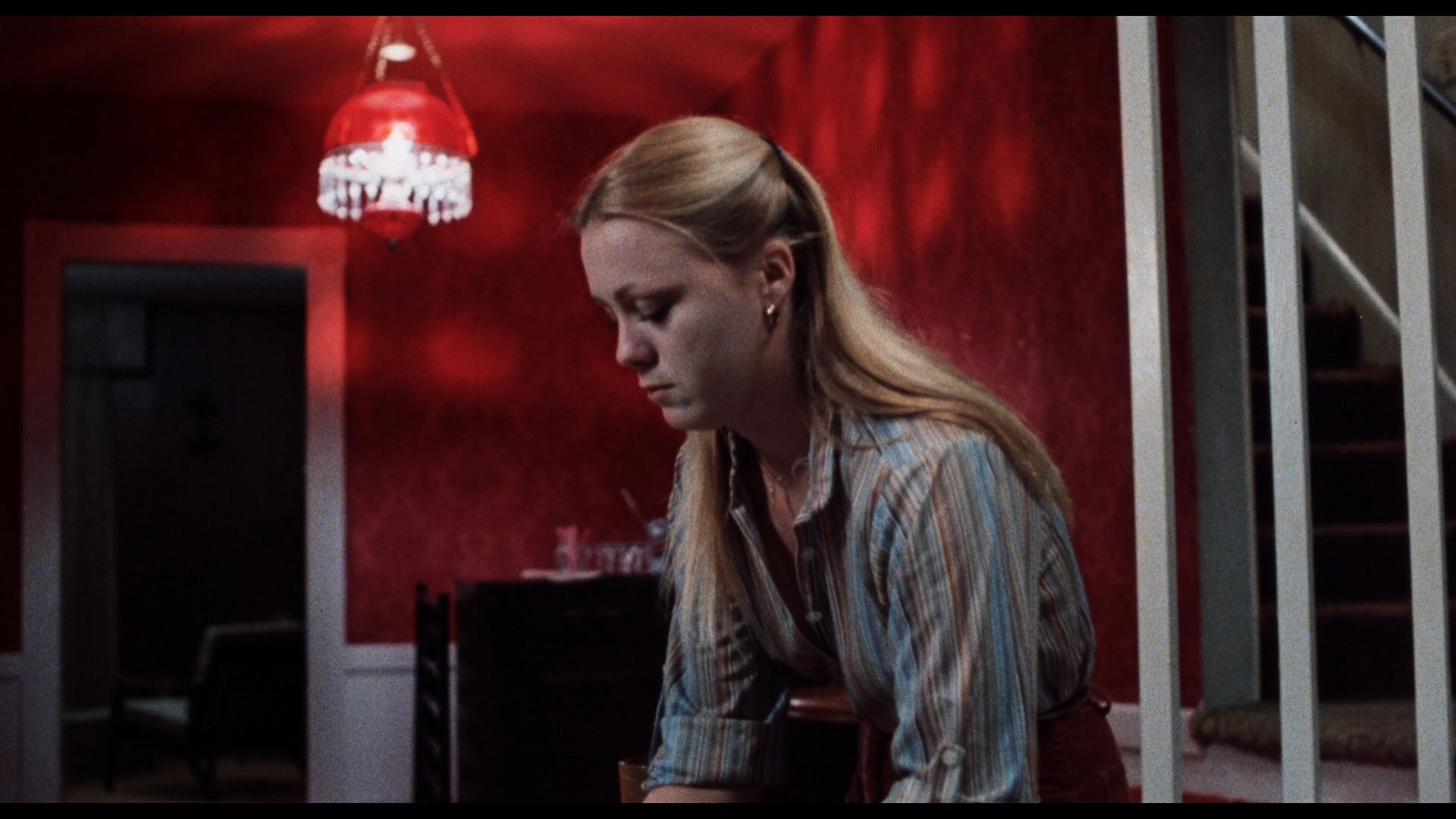 prints, which looked like they were projected through dirty dishwater. Interestingly, this version also contains more image information than the other two versions, including some particularly dirty details during the peepshow booth scene that are difficult to overlook. The best of the extras is still found on disc one, though, an audio commentary for the widescreen 2005 version featuring Stafford and make-up artist Cleve Hall with moderators Lee Christian and David DeCoteau. It's a wildly entertaining chat track with lots of great trivia about the making of the film including the personal stories of the various actors, the shoot's difficult transitions between the Big Apple and Florida, and the ins and outs of working with Scavolini before the film's fiery theatrical history. Some of the same ground is covered from a different perspective with both participants in the 17-minute "Making of Nightmare" featurette, which also adds in distributor Tom Ward from 21st Century for more of a look at the film's place in the spectrum of early '80s horror and its turbulent reception. FX artist Edward French (who went on to a Hollywood career) adds some facts about the Savini controversy (as do the other extras) and offers his own views on crafting the extreme gore found on screen. The second disc has one enormous but kind of bewildering supplement, a 95-minute unedited interview with Scavolini in Italian without subtitles. Anyone familiar with his extremely, ahem, colorful interview in the bizarre 1996 book Spaghetti Nightmares should be able to glean what he's talking about here. Incidentally, Scavolini had earlier helmed another much more elegant horror film in 1972, Spirits of Death (Un bianco vestito per Marialé), whose essential DVD release also has a great interview with the colorful auteur. Other extras on the second disc include two Nightmare theatrical trailers from the American release and a handful of bonus Code Red promos including another notorious gore film of a very different kind, Cut-Throats Nine.
prints, which looked like they were projected through dirty dishwater. Interestingly, this version also contains more image information than the other two versions, including some particularly dirty details during the peepshow booth scene that are difficult to overlook. The best of the extras is still found on disc one, though, an audio commentary for the widescreen 2005 version featuring Stafford and make-up artist Cleve Hall with moderators Lee Christian and David DeCoteau. It's a wildly entertaining chat track with lots of great trivia about the making of the film including the personal stories of the various actors, the shoot's difficult transitions between the Big Apple and Florida, and the ins and outs of working with Scavolini before the film's fiery theatrical history. Some of the same ground is covered from a different perspective with both participants in the 17-minute "Making of Nightmare" featurette, which also adds in distributor Tom Ward from 21st Century for more of a look at the film's place in the spectrum of early '80s horror and its turbulent reception. FX artist Edward French (who went on to a Hollywood career) adds some facts about the Savini controversy (as do the other extras) and offers his own views on crafting the extreme gore found on screen. The second disc has one enormous but kind of bewildering supplement, a 95-minute unedited interview with Scavolini in Italian without subtitles. Anyone familiar with his extremely, ahem, colorful interview in the bizarre 1996 book Spaghetti Nightmares should be able to glean what he's talking about here. Incidentally, Scavolini had earlier helmed another much more elegant horror film in 1972, Spirits of Death (Un bianco vestito per Marialé), whose essential DVD release also has a great interview with the colorful auteur. Other extras on the second disc include two Nightmare theatrical trailers from the American release and a handful of bonus Code Red promos including another notorious gore film of a very different kind, Cut-Throats Nine.
Now we jump forward to 2014 with something that had to be coming sooner or later, a Blu-ray edition from Code Red. The transfer is advertised as a brand new 2013 master, which means you're getting a nice HD upgrade of that superior third option. The boost in resolution helps, not surprisingly, with detail sharpening up and the plentiful shades of red benefiting from better color reproduction. This probably won't ever look like its slicker fellow slashers due to the nature of its production, but fans should be pleased with the results. Damage is very minimal here, with a fleeting green scratch in the opening scene and 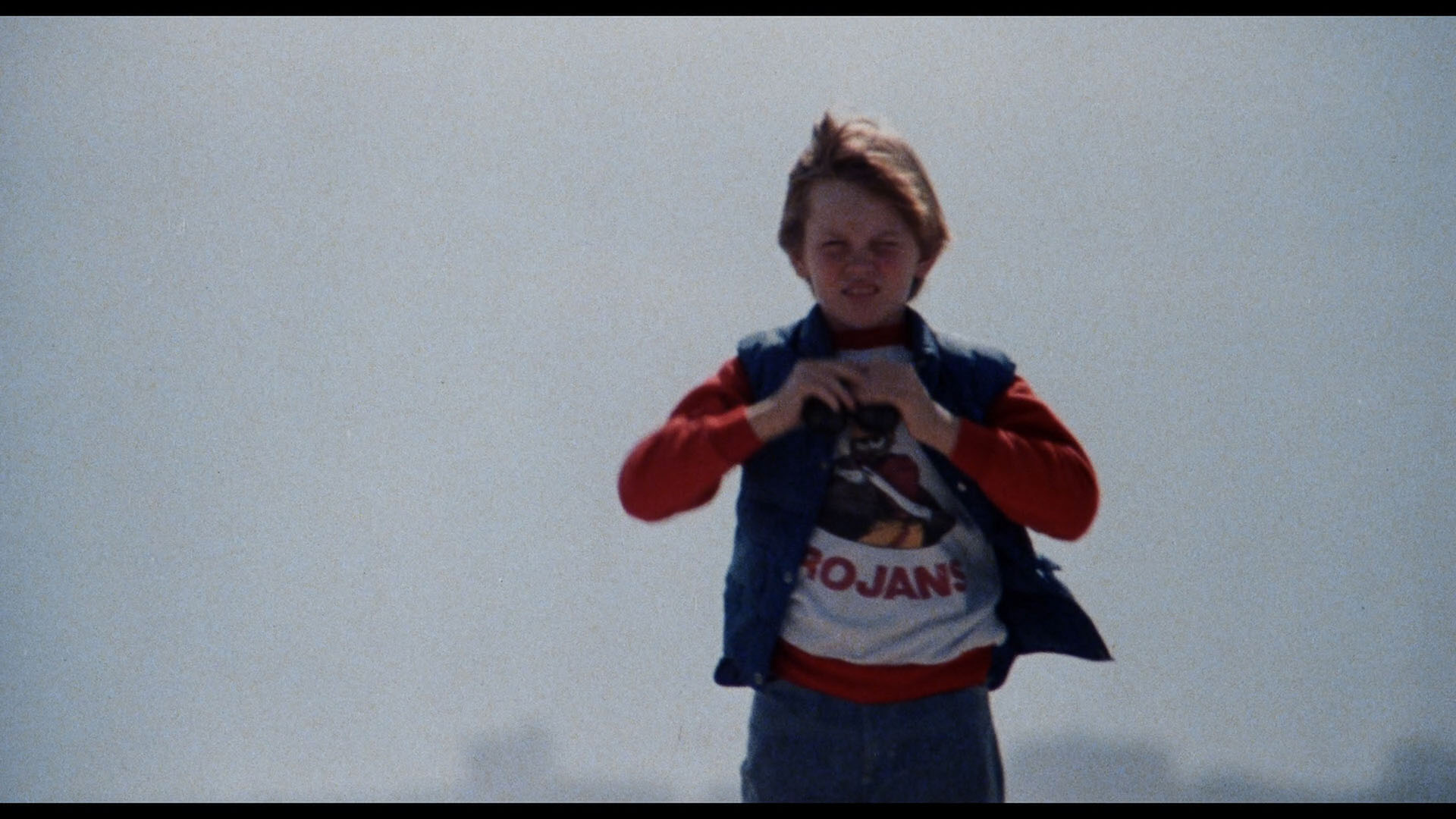 a few flecks here and there. The DTS-HD mono audio sounds solid as well. As for extras, you get the Stafford/Hall/Christian/DeCoteau commentary, the making-of featurette, the long version of the theatrical trailer, the Ed French featurette, and in a nice
a few flecks here and there. The DTS-HD mono audio sounds solid as well. As for extras, you get the Stafford/Hall/Christian/DeCoteau commentary, the making-of featurette, the long version of the theatrical trailer, the Ed French featurette, and in a nice 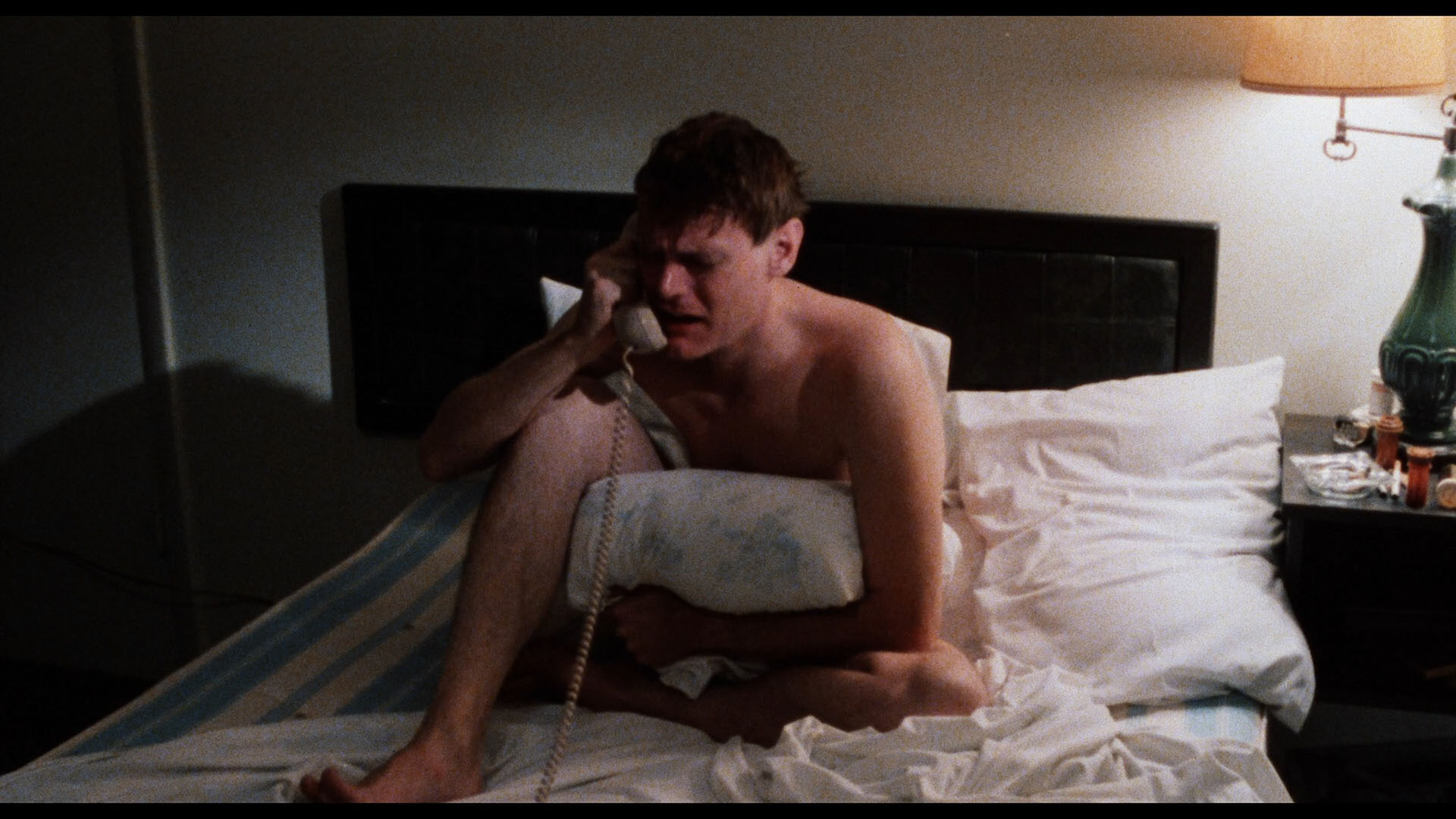 touch, the Scavolini interview with - yes! - English subtitles at last ("subtitled by cult icon Damon Packard"). On top of that there are also two new interviews, starting with an 8-minute featurette with producer Bill Milling (who stepped in front of the camera to play the bearded psychiatrist). He goes over the grueling 12-day shoot without breaks, the reason his part kept getting bigger, and the fun working habits of Scavolini on the set. Then there's a new 11-minute interview with Mik Cribben, who worked as the unit production manager and wound up stepping in as the bandanna-wearing, ostensible good guy in the film. Once again it's a fun, candid perspective on the film covering tension between Scavolini and the producers, the Florida shooting, acting in his skivvies, backstage drama with people getting shuffled around and fired, and a somewhat jumbled account of the whole poster controversy.
touch, the Scavolini interview with - yes! - English subtitles at last ("subtitled by cult icon Damon Packard"). On top of that there are also two new interviews, starting with an 8-minute featurette with producer Bill Milling (who stepped in front of the camera to play the bearded psychiatrist). He goes over the grueling 12-day shoot without breaks, the reason his part kept getting bigger, and the fun working habits of Scavolini on the set. Then there's a new 11-minute interview with Mik Cribben, who worked as the unit production manager and wound up stepping in as the bandanna-wearing, ostensible good guy in the film. Once again it's a fun, candid perspective on the film covering tension between Scavolini and the producers, the Florida shooting, acting in his skivvies, backstage drama with people getting shuffled around and fired, and a somewhat jumbled account of the whole poster controversy.
In late 2015, UK label 88 Films threw an interesting twist into the story of this film's video history with its separate Blu-ray and DVD releases as number 12 in its Slasher Classics Collection. The BBFC brouhaha long gone, the film was free to pass uncut -- and in a slightly longer version previously unseen on home video, clocking in at 99m4s (about 39 seconds longer than the longest U.S. cut on the Code Red disc). This doesn't consist of gore but random bits of scene extensions confined to the first third of the film, mainly bits at the heads and tails of scenes presumably lost due to element damage or removed for pacing reasons. The color timing is radically different here, looking brighter and cooler with more detail visible but whites also tended to bloom more; frame grab comparisons can be seen below so you can judge for yourself. The 88 Films transfer has a slight bit of extra info at the bottom of the frame, which means the already eyebrow-raising bit with the vibrator in the peepshow now reveals even more. The LPCM English mono soundtrack has been cleaned up quite a bit but features some pretty extreme leaps in volume, so be prepared to have your remote handy or any nearby pets or neighbors might get very 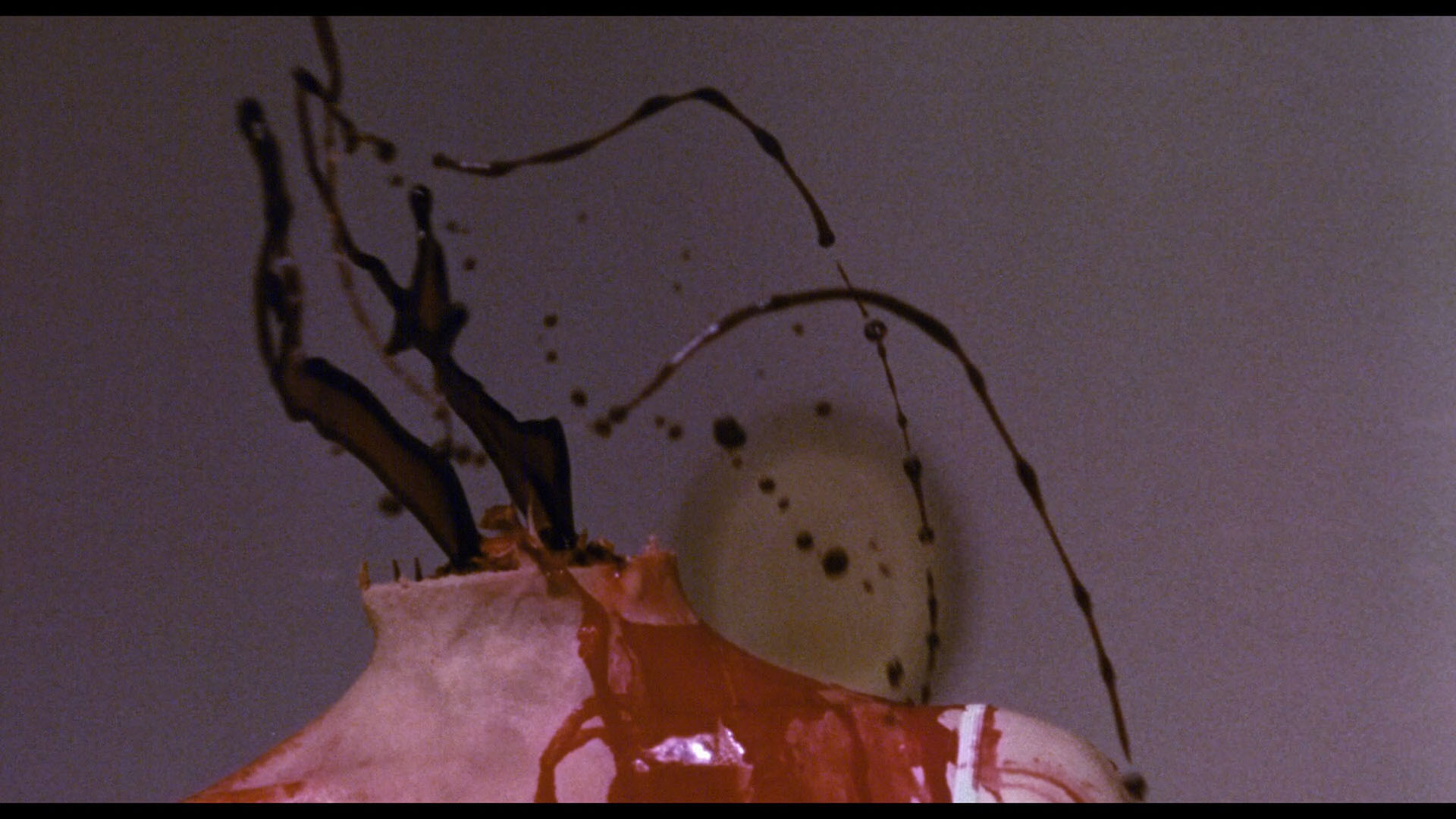 upset.
upset. 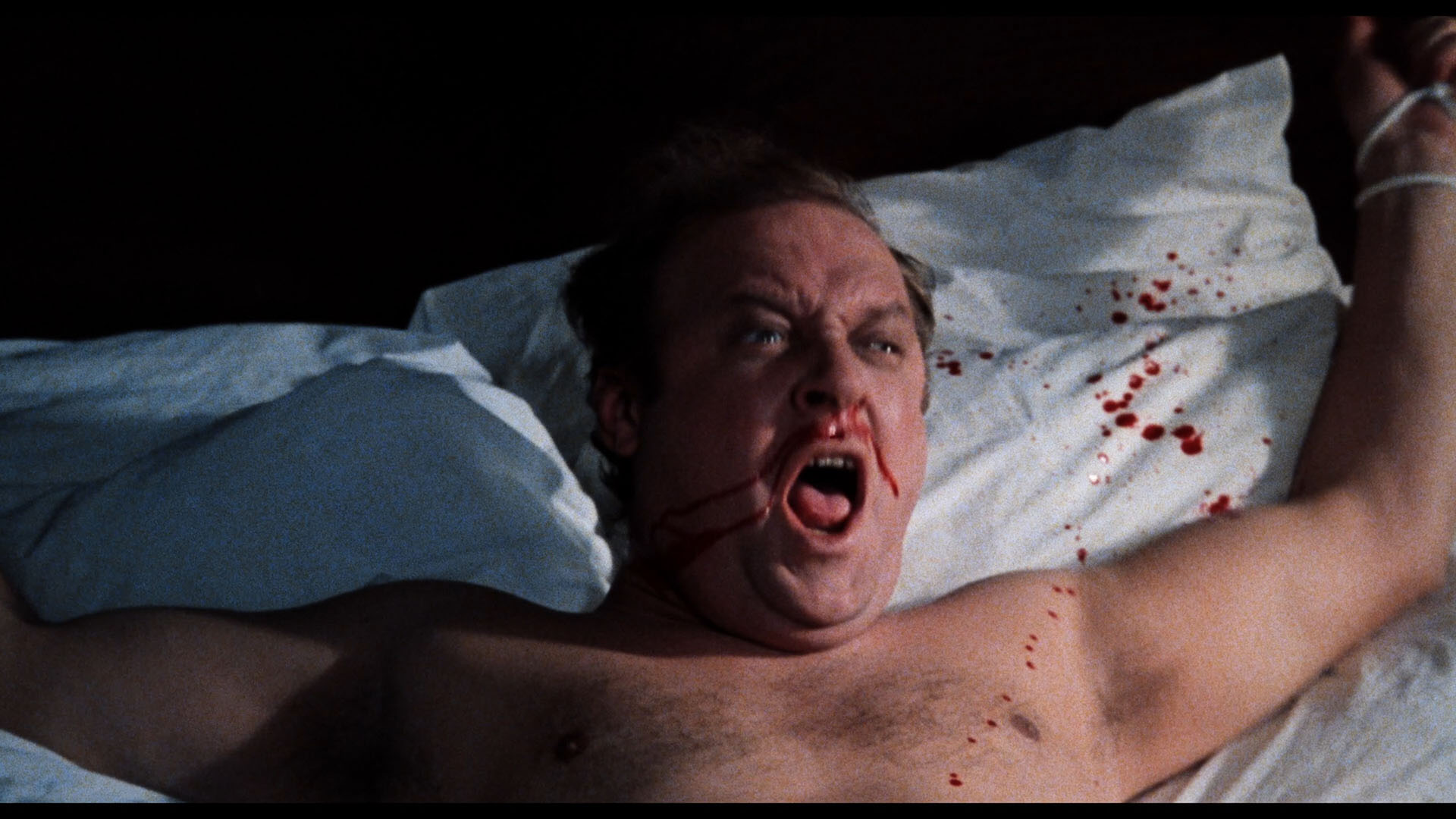 Extras here are completely different, so to put it simply, slasher films will simply want to have both releases in their collections. Associate producer Bill Paul provides a new audio commentary about working with the Italian director, handling the location shifts between New York and Florida, and coordinating the very messy gore effects with the occasional participation of child actors; it's a solid alternate history compared to the older one. A brief 3-minute interview with 21st Century Films CEO Tom Ward is a thumbnail sketch of the film's controversial theatrical release in the US with bit about the special effects dispute, and "Terror in Times Square" features former Fangoria editors Mike Gingold and Tony Timpone guiding you through the radically changed areas where the opening scenes were shot. Scavolini and Stafford are covered in the insert booklet via print interviews.
Extras here are completely different, so to put it simply, slasher films will simply want to have both releases in their collections. Associate producer Bill Paul provides a new audio commentary about working with the Italian director, handling the location shifts between New York and Florida, and coordinating the very messy gore effects with the occasional participation of child actors; it's a solid alternate history compared to the older one. A brief 3-minute interview with 21st Century Films CEO Tom Ward is a thumbnail sketch of the film's controversial theatrical release in the US with bit about the special effects dispute, and "Terror in Times Square" features former Fangoria editors Mike Gingold and Tony Timpone guiding you through the radically changed areas where the opening scenes were shot. Scavolini and Stafford are covered in the insert booklet via print interviews.
In 2023 (by which point all the aforementioned editions were long discontinued and hard to find for any kind of a reasonable price), Severin Films issued a UHD and Blu-ray three-disc edition (including a limited slipcover and an insert booklet featuring an essay by yours truly) featuring a fresh 4K scan from the internegative and "various foreign print sources" to create the best-looking and most complete version of the film to date, clocking in at 99m10s. The UHD was not available for review as of this writing, but that and the Blu-ray both contain the two preexisting commentary tracks and the theatrical trailer. The film itself comes with DTS-HD MA 5.1 and 2.0 mono (labeled as stereo) tracks, with the former adding a little enhanced space to the music and sound effects; optional English SDH subtitles are also provided. The new scan is even better in terms of element condition than what we've had before with the best color timing of the bunch; it's still a very grungy film and rather dark and drab, but fans should be happy to see it in what amounts to a significant upgrade. Also on the first Blu-ray is a more streamlined Scavolini interview called "Kill They Father and Thy Mother" (71m44s) in Italian with English subtitles about the inspiration of real-life MK-Ultra experiments and the process of developing the project. "Dreaming Up a Nightmare" (39m9s) compiles various interviews into a mostly linear account of the film's creation featuring production supervisor Simon Nuchtern, Cribben and Milling (from their earlier Code Red sessions), Hall, French, Stafford, uncredited editor Jim Markovic, and 21st Century's Arthur Schweitzer (who has some great stories about various acquisitions around the same time, as well as the pacing trims made to this film). One of the biggest selling points in this set is easily "The Nightmare of Nightmare" (7m34s) with "erroneously credited special effects director" Savini finally going in front of the camera to talk about the film, recalling his brief stint in NYC as a consultant while they were shooting the trauma flashback. In "The Stuff That Nightmare Are Made Of" (12m18s), makeup artist Robin Stevens talks about being a makeup artist during the local disco heyday and working with Scavolini on rounding up the resources she needed for minimal funds around Cocoa Beach on very short notice, which went from basic actor makeup to helping with special effects. "A Nightmare on Many Streets" (11m5s) brings back Gingold for a solo locations tour this time, starting with a survey of various 42nd Street locales before branching out to a number of sunny Florida spots. All you pervs out there will be grateful for a completely open matte version of the 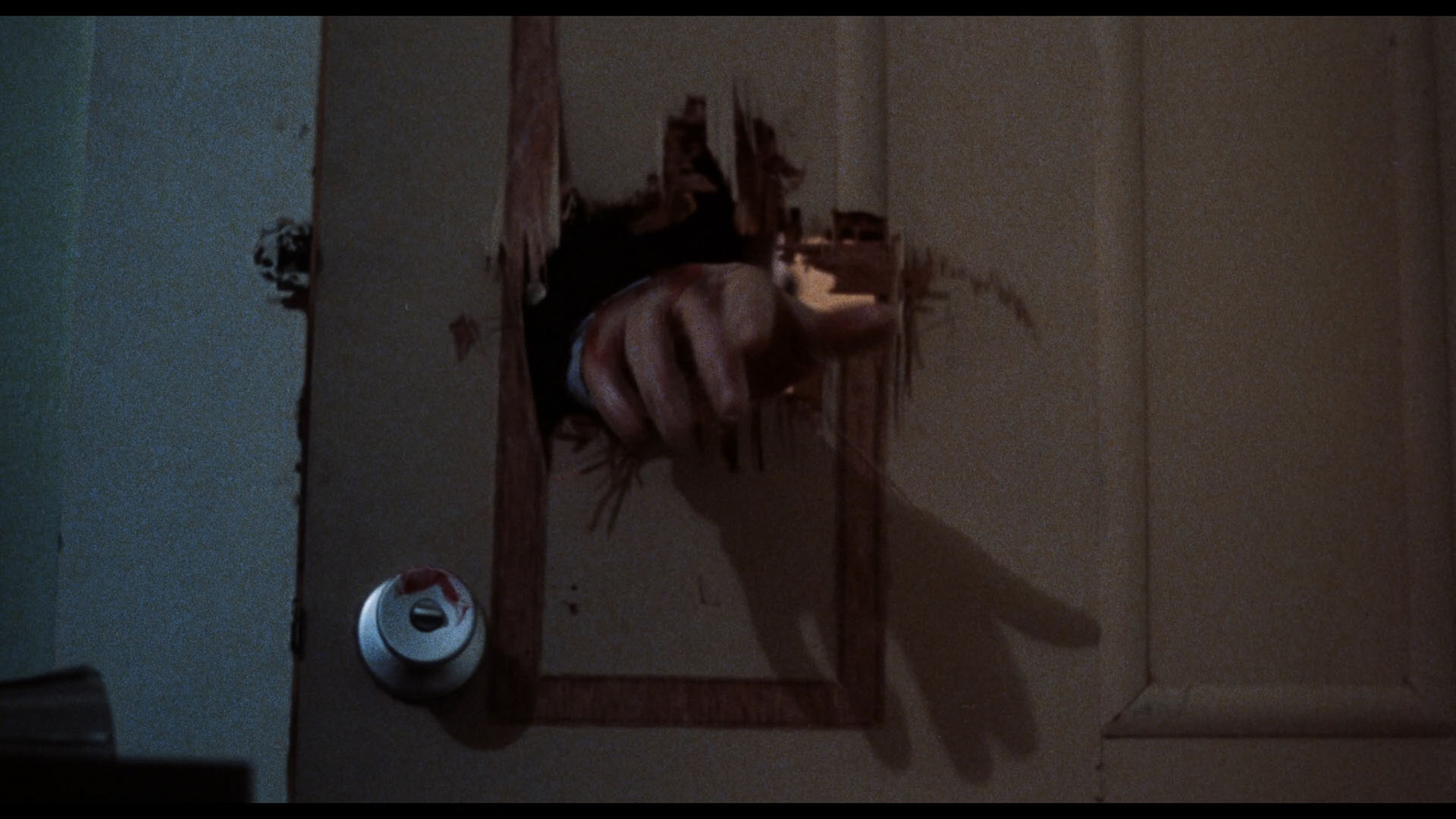 peep show sequence, which delivers exactly what you'd expect. A 1m18s selection of deleted footage highlights two brief snippets in the Dutch and Australian VHS releases from an alternate edit of the film that apparently no longer exists on
peep show sequence, which delivers exactly what you'd expect. A 1m18s selection of deleted footage highlights two brief snippets in the Dutch and Australian VHS releases from an alternate edit of the film that apparently no longer exists on 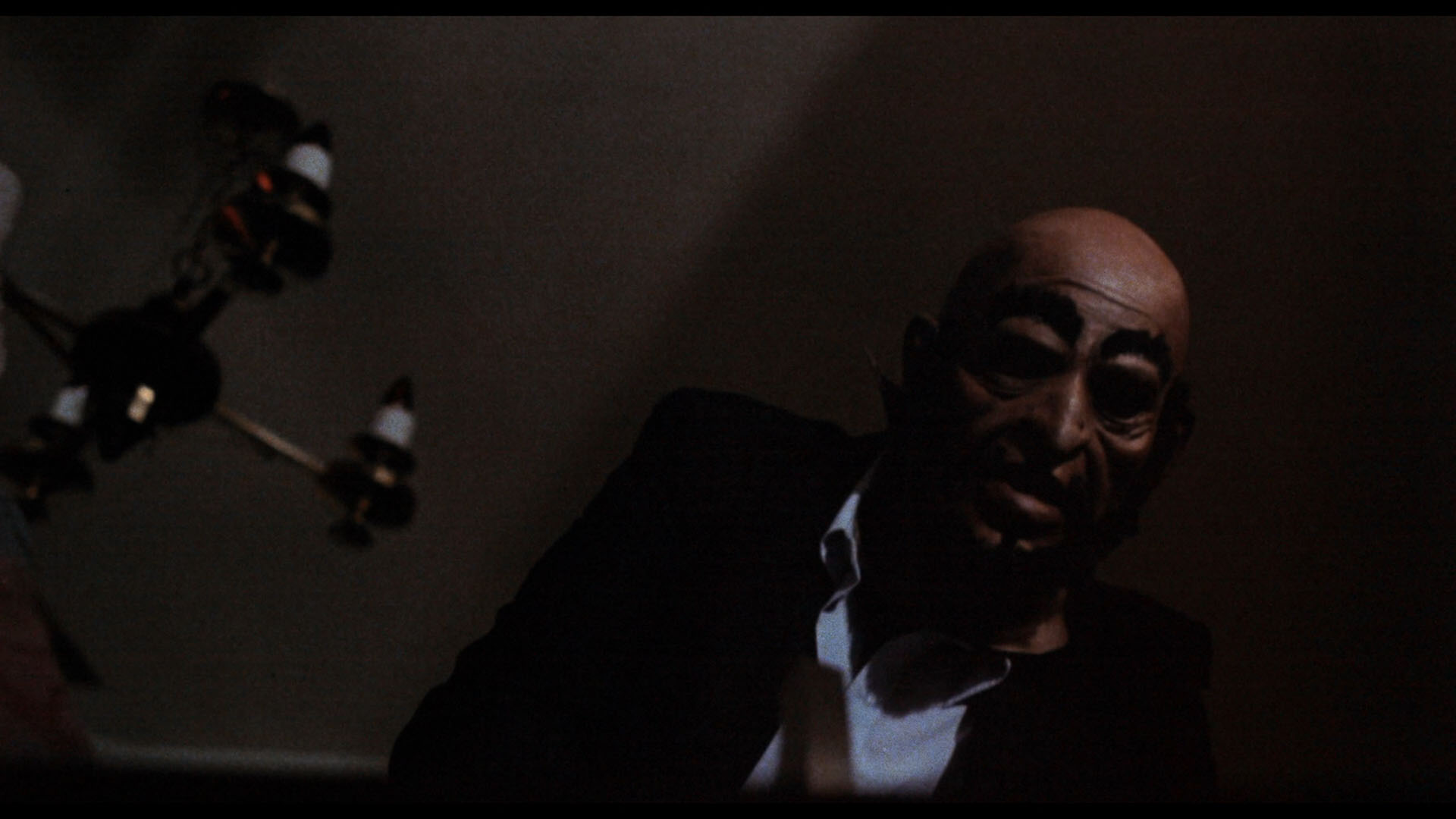 film. Finally you get a 10m14s gallery of stills and promotional art, plus two trailers (with and without the Savini credit).
film. Finally you get a 10m14s gallery of stills and promotional art, plus two trailers (with and without the Savini credit).
Knowing how much of a fascination with video nasties has been held by Severin since the label's inception, it shouldn't be a surprise to have that as the focus of the second Blu-ray headlined by Damaged: The Very British Obscenity of David Hamilton-Grant (71m44s), a feature-length look at the completely bonkers history behind the distributor whose sexploitation background and dubious professional ties culminated in his prison stint over this film. It's a wild saga including runs from the law, drugs, censorship, porn, naughty animation, and his presumably gangland-connected demise (or was it?), with participants like Vic Pratt, Brendan Price, Francoise Pascal, Cherri Gilham, Kate Egan, David Flint, Marianne Morris, David McGillivray, Fiona Richmond, Antony Ginnane, and film professor Julian Petley, with narration by Jack Davenport(!). Great stuff, and it comes with optional English SDH subtitles. Also on the disc are four of Hamilton-Grant's short productions: The Office Party (53m50s), a typical 1976 softcore sex comedy, scanned from a decent print in HD and framed at 1.66:1; 1975's Under the Bed (52m16), one of several softcore romps with John Hamill (Tower of Evil), here pulled from SD video; 1978's You're Driving Me Crazy (53m10s) featuring Suzy Mandel and charting the comic misadventures of an au pair hired to chauffeur a guy given a DUI, pulled from film and shown at 1.66:1; and Escape to Entebbe (8m132s), a baffling 1976 spoof short with The Vicar of Dibley's John Bluthal in brownface as a Pakistani reporter interviewing Idi Amin.
SEVERIN BLU-RAY
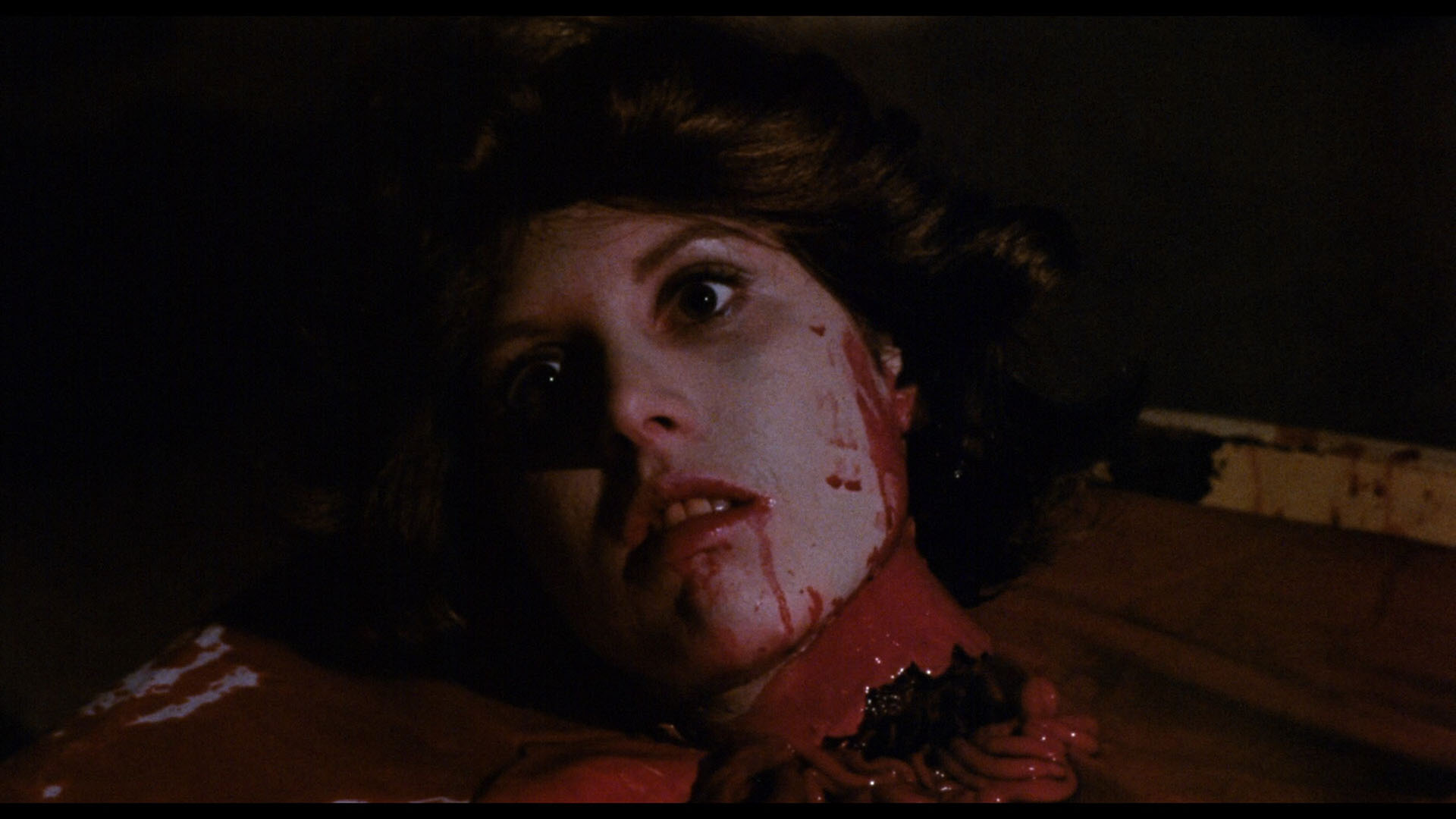
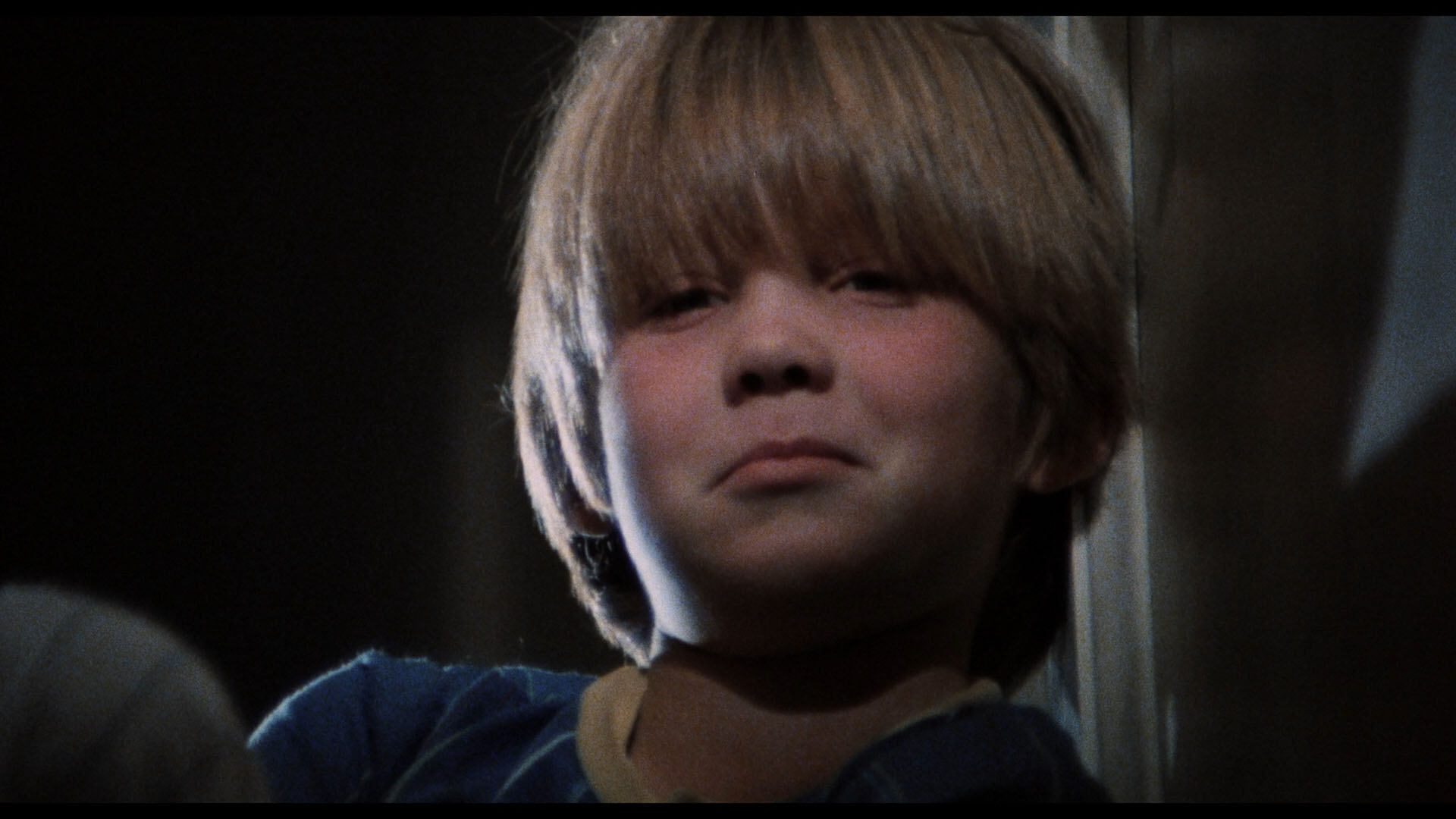
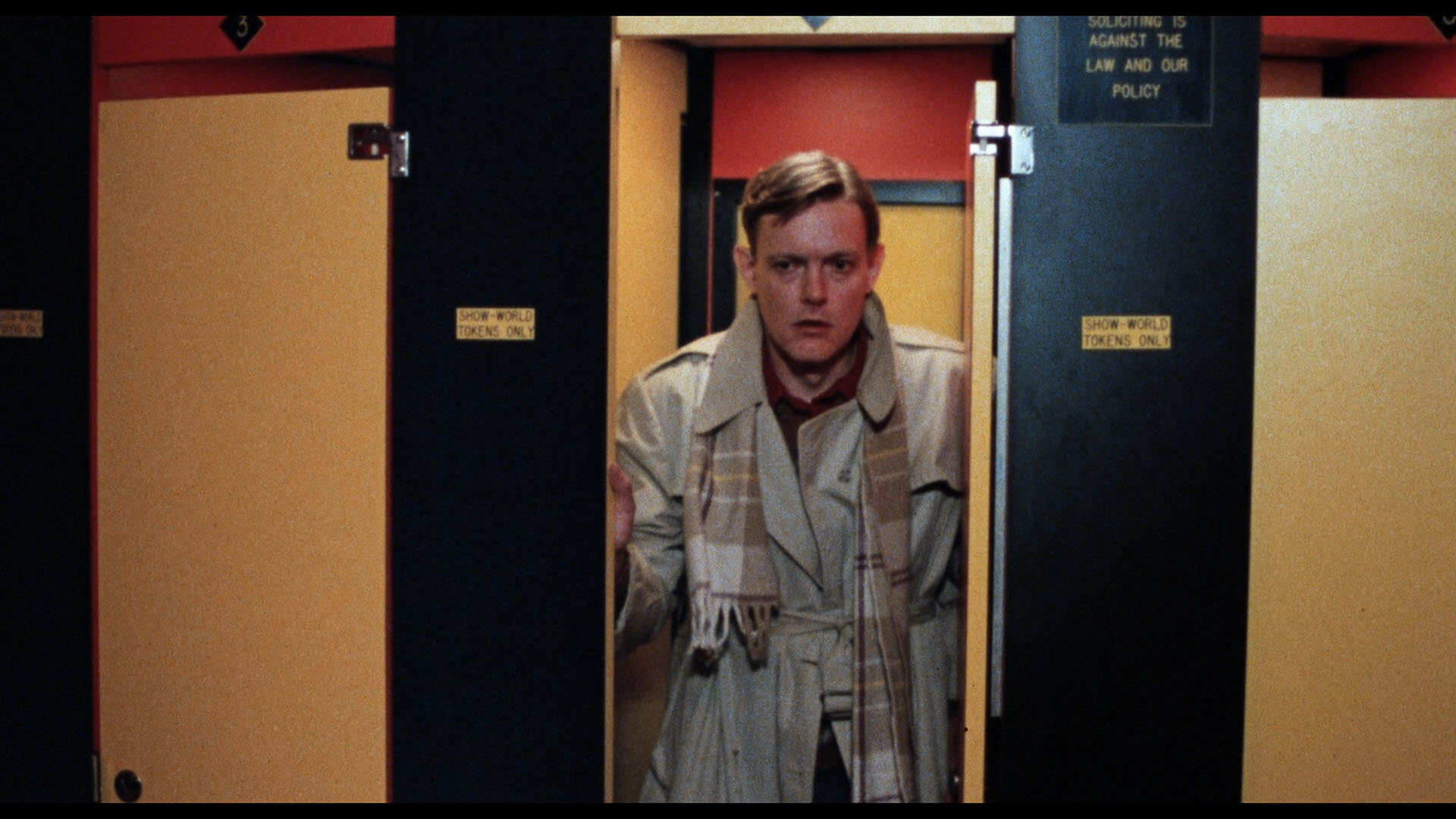
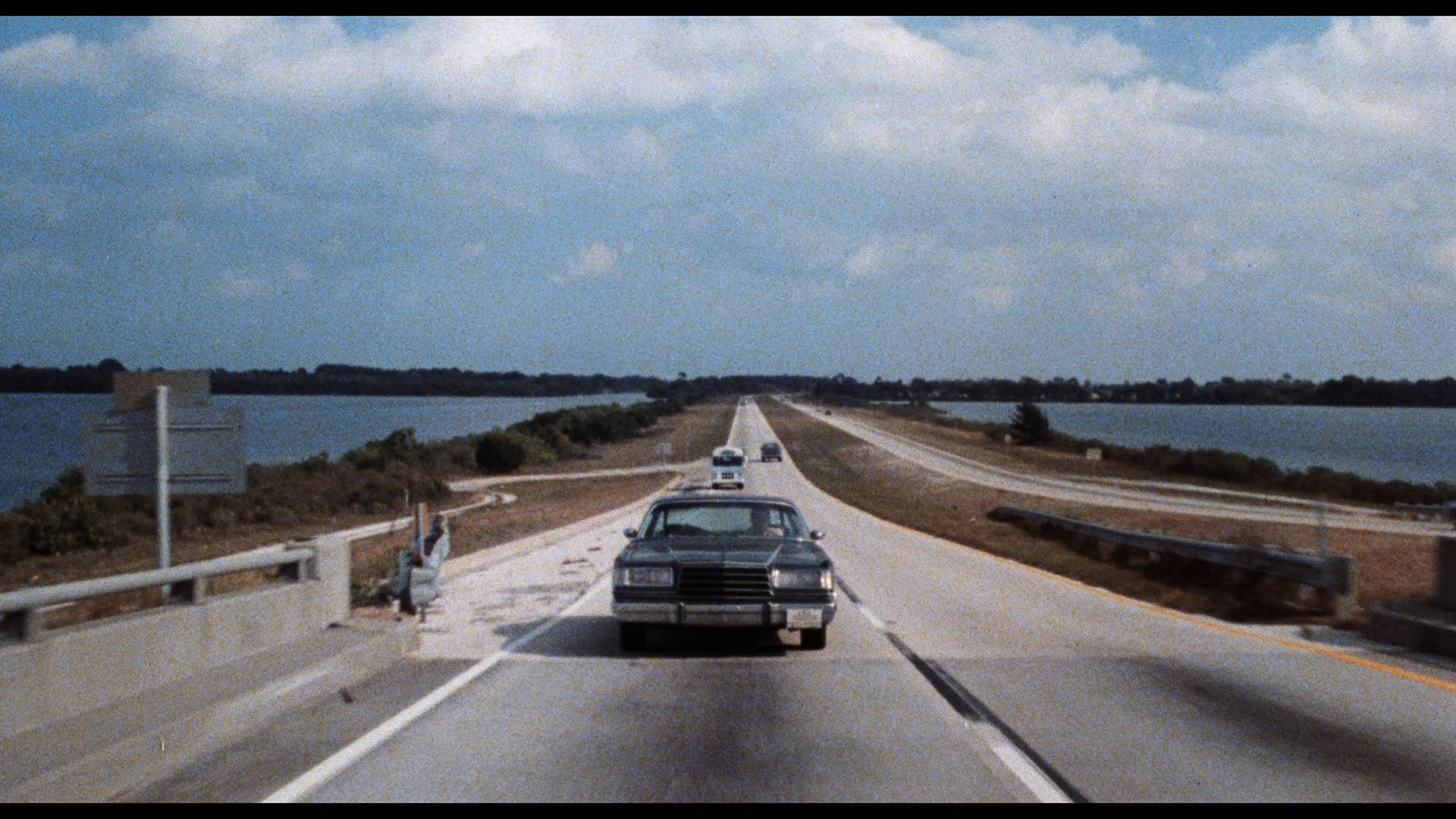
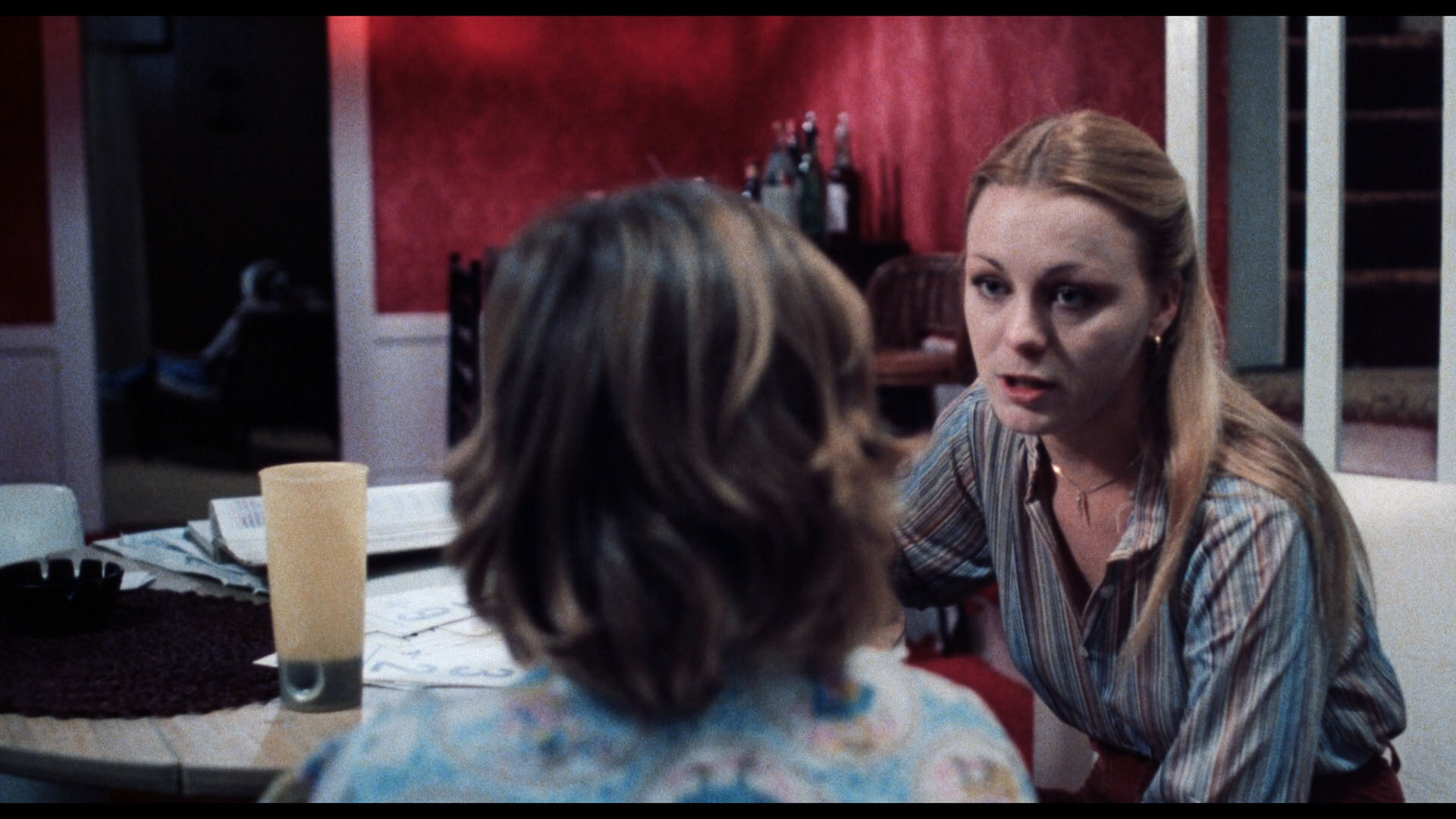
88 FILMS BLU-RAY
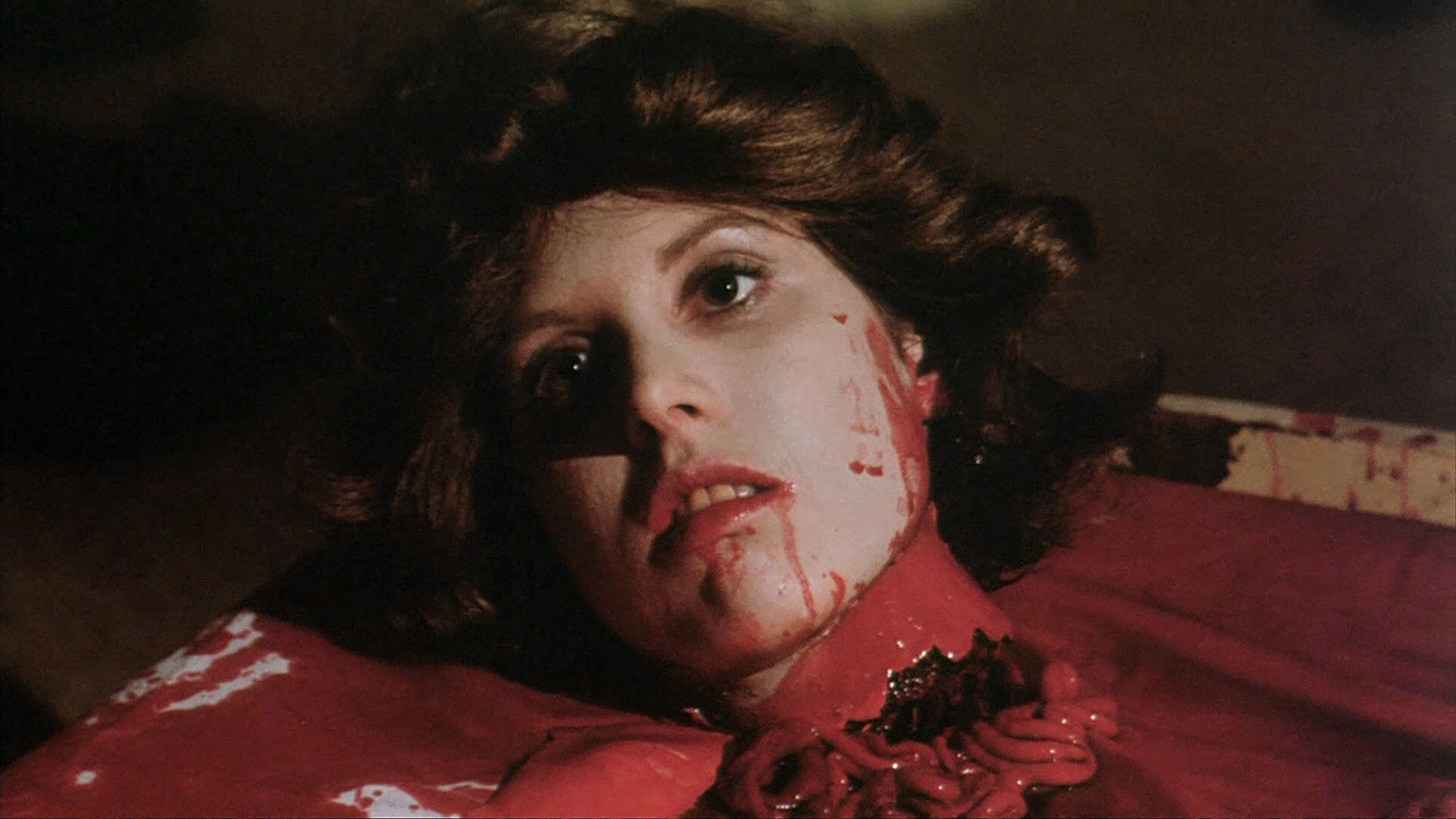
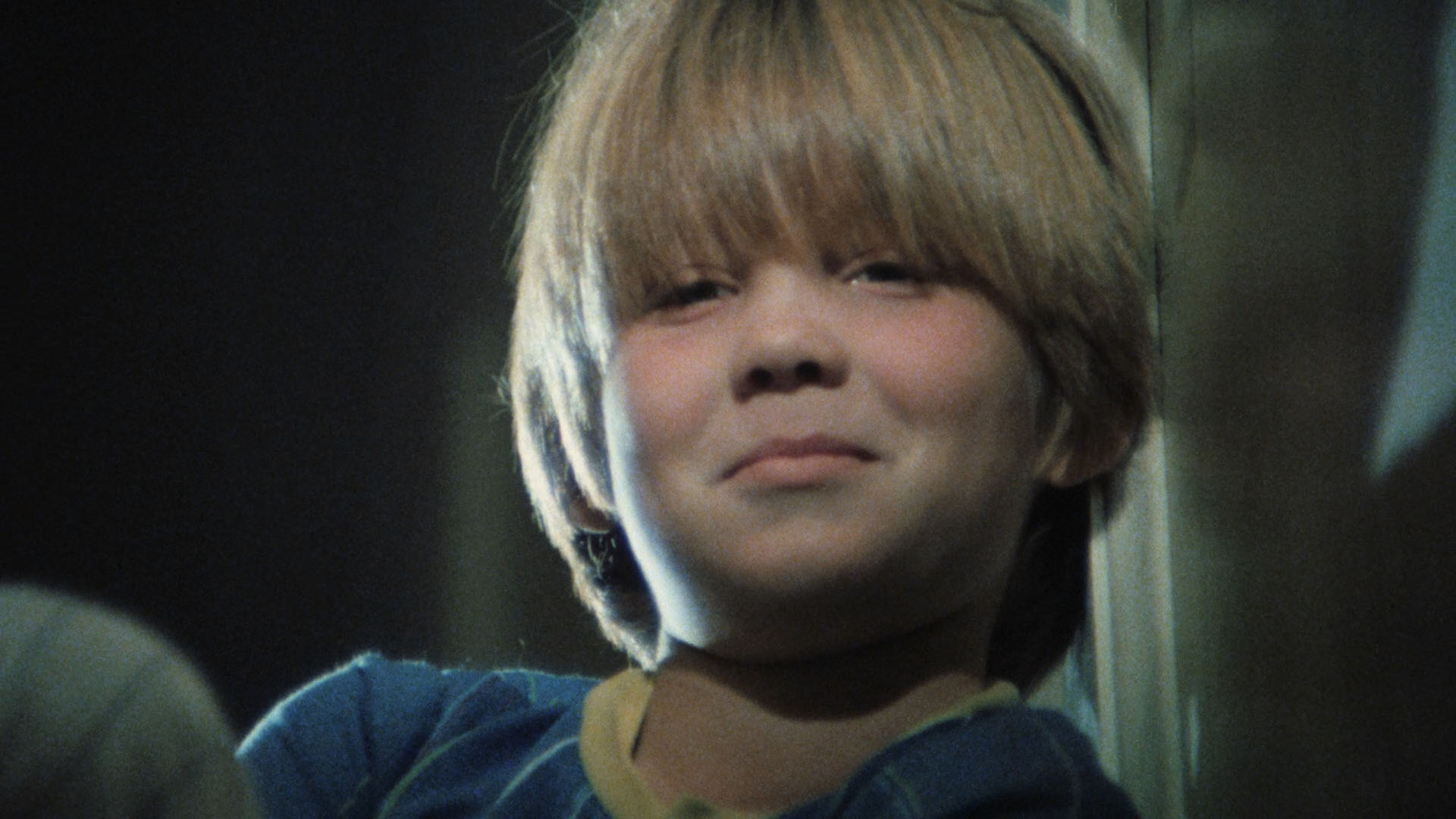
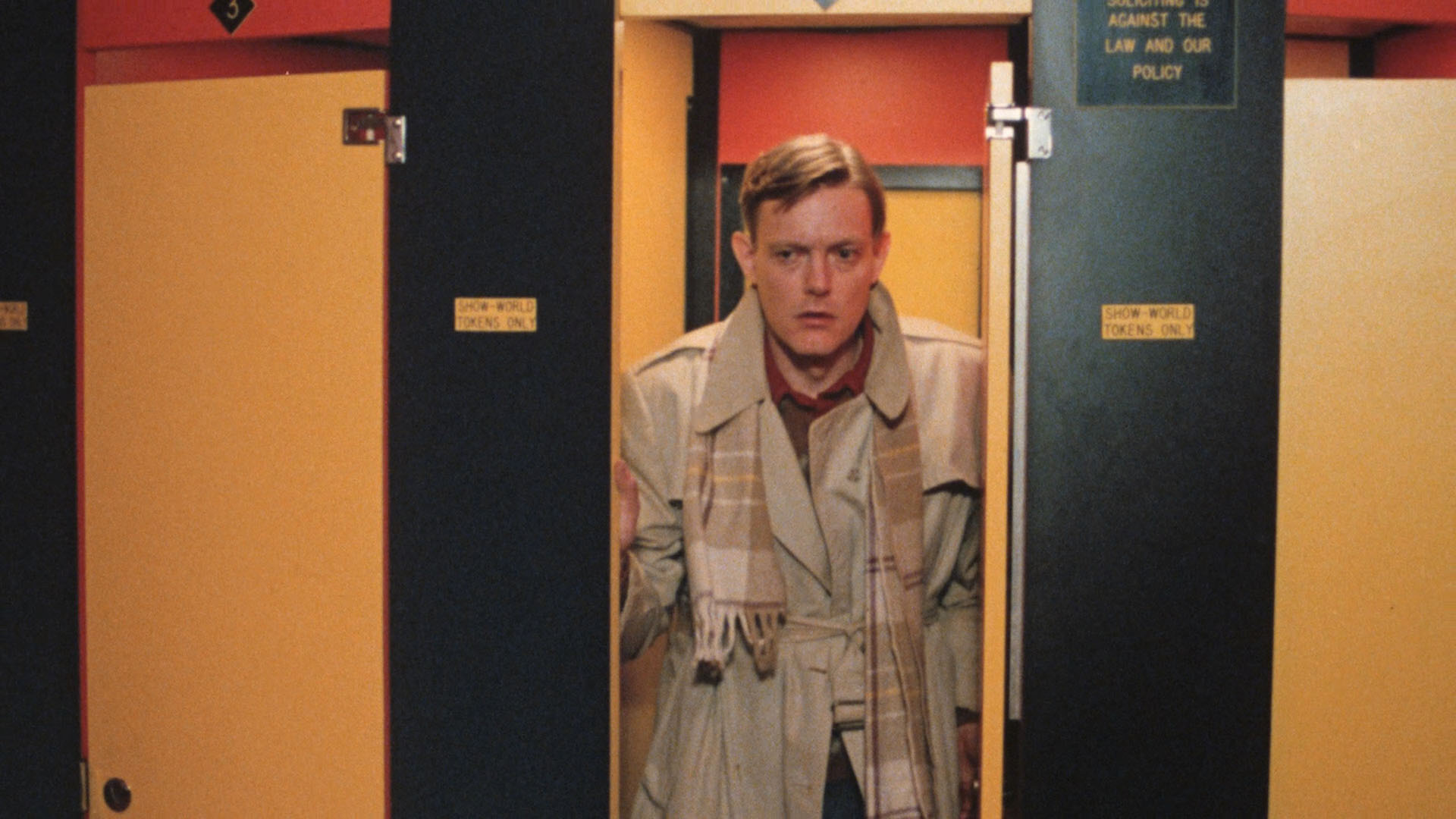
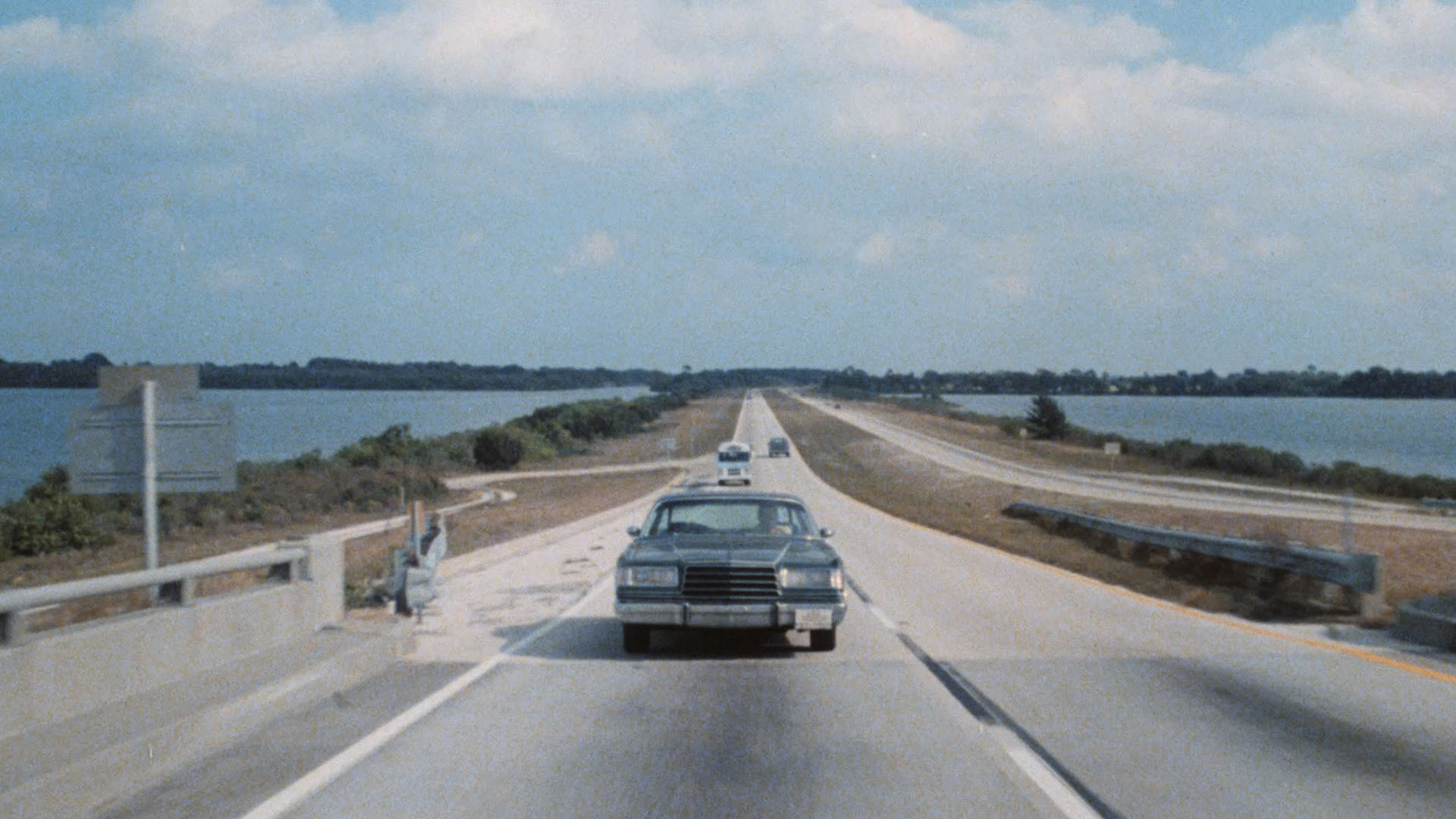
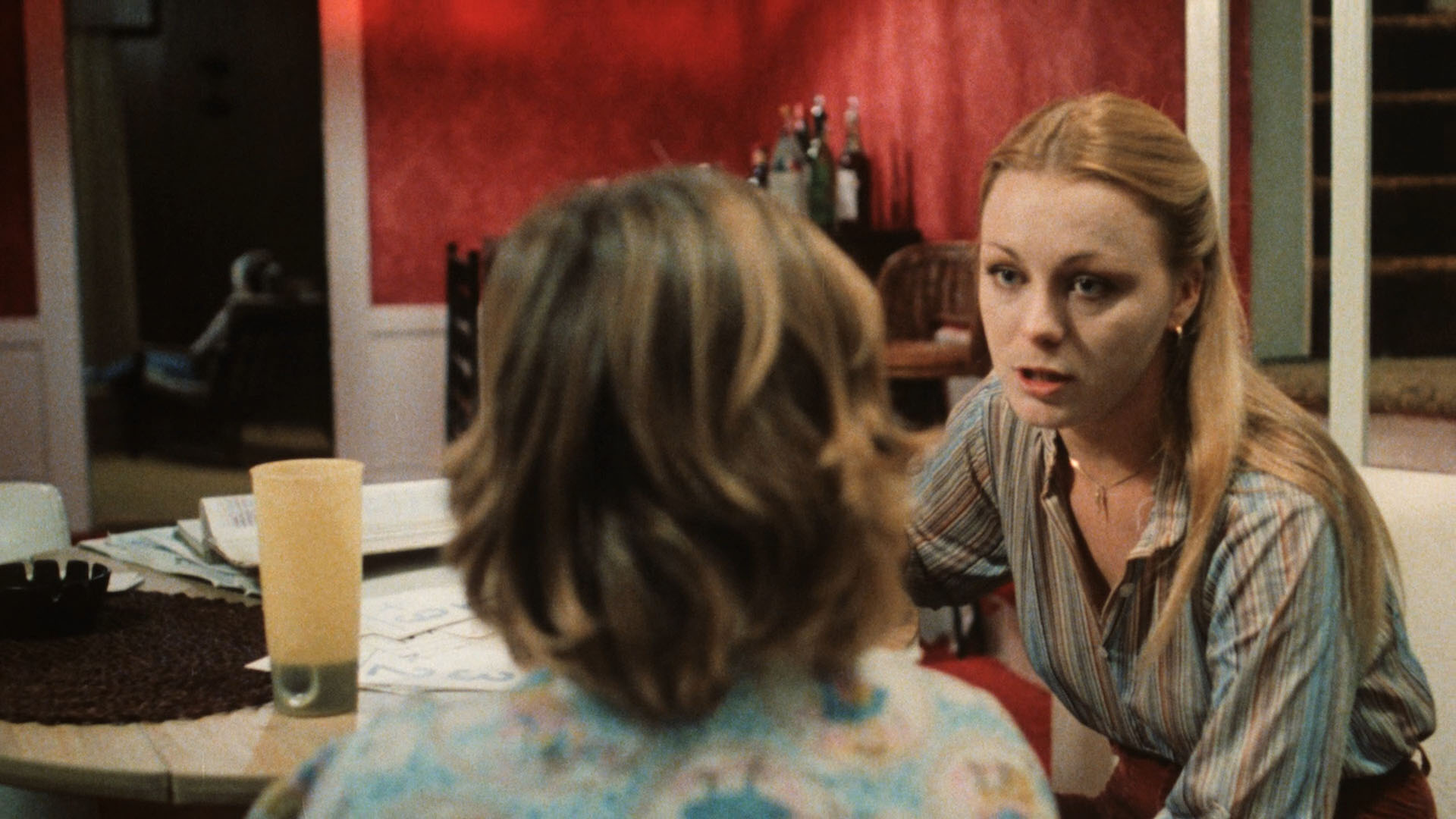
CODE RED BLU-RAY
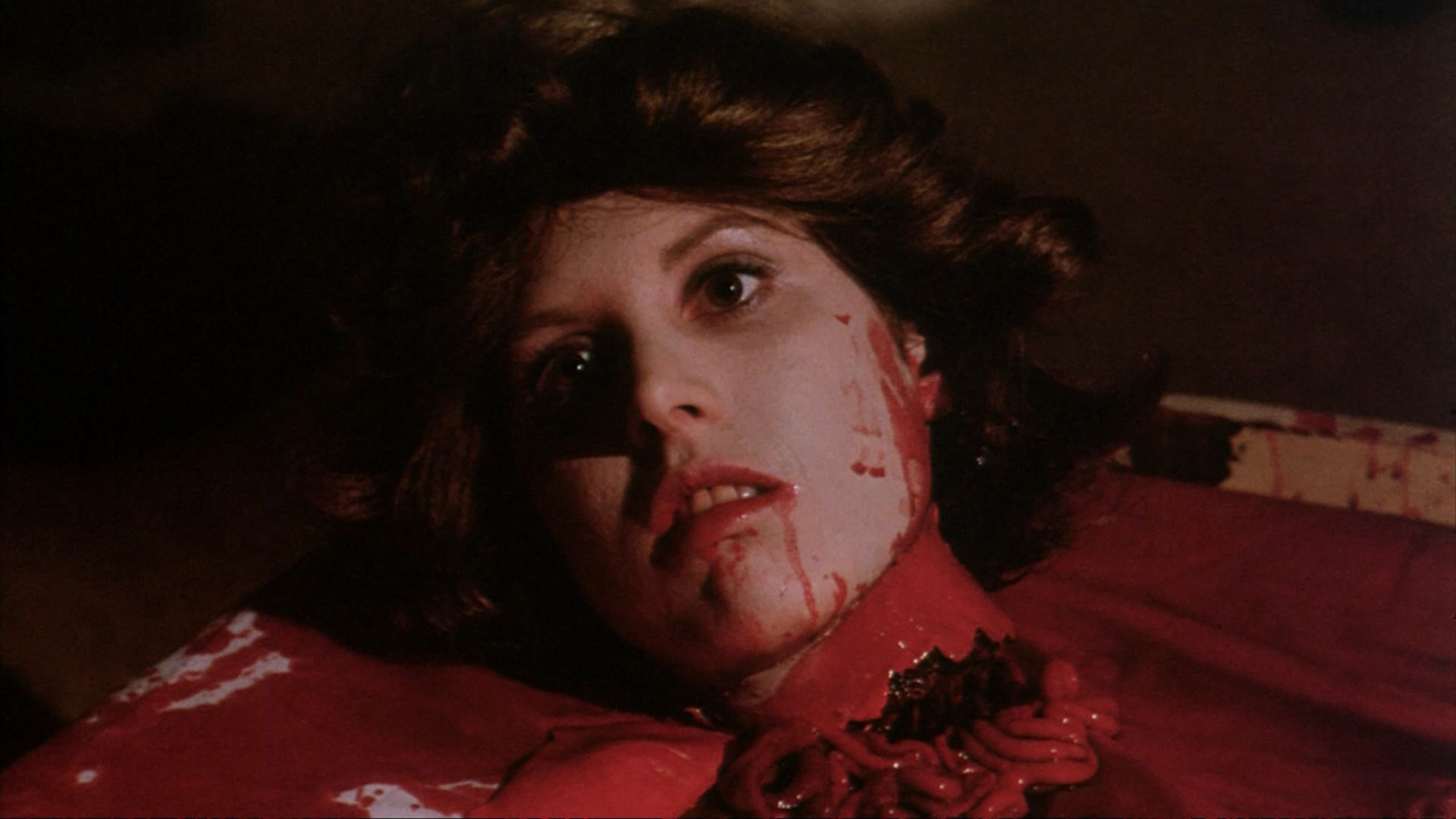
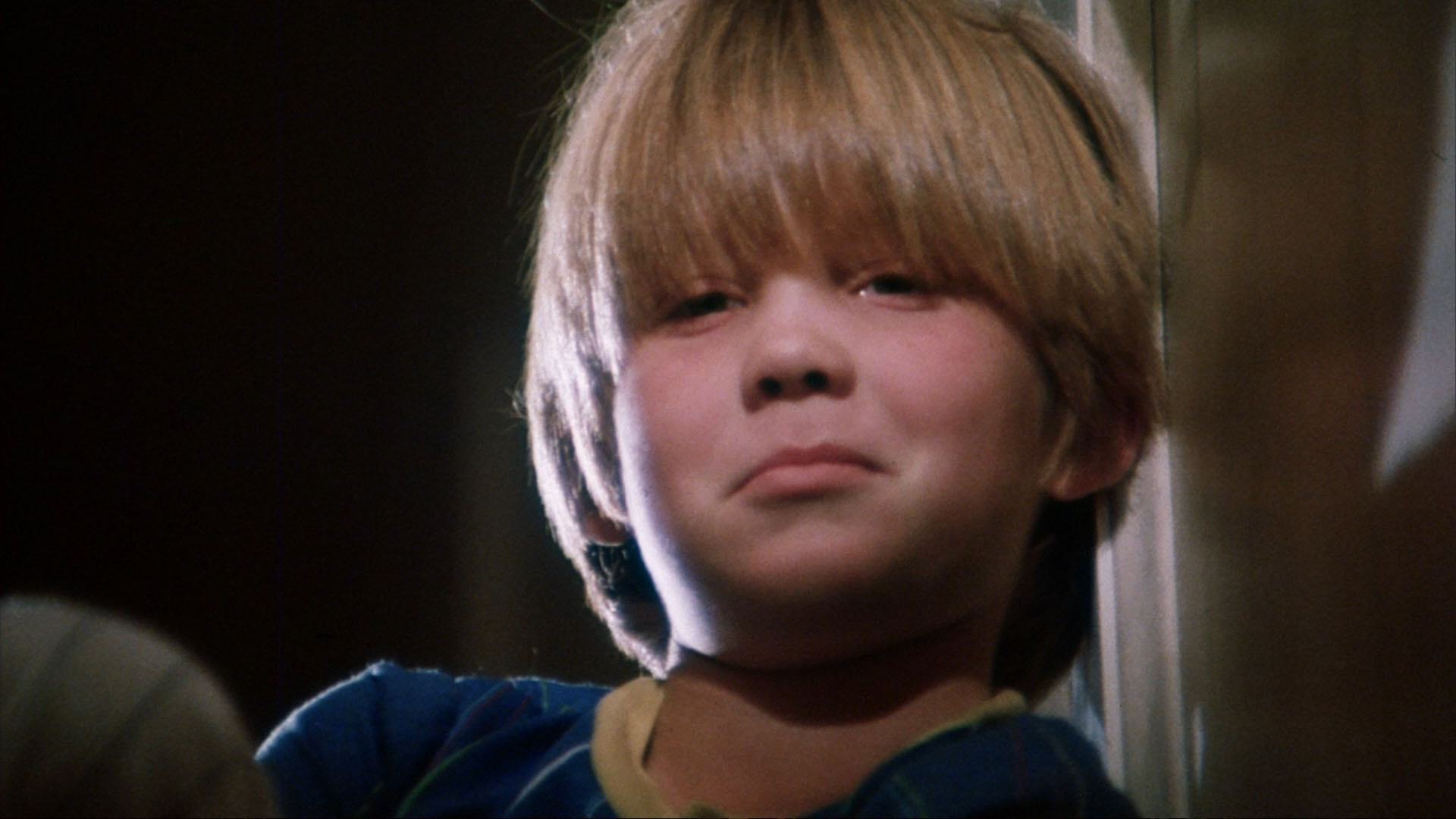
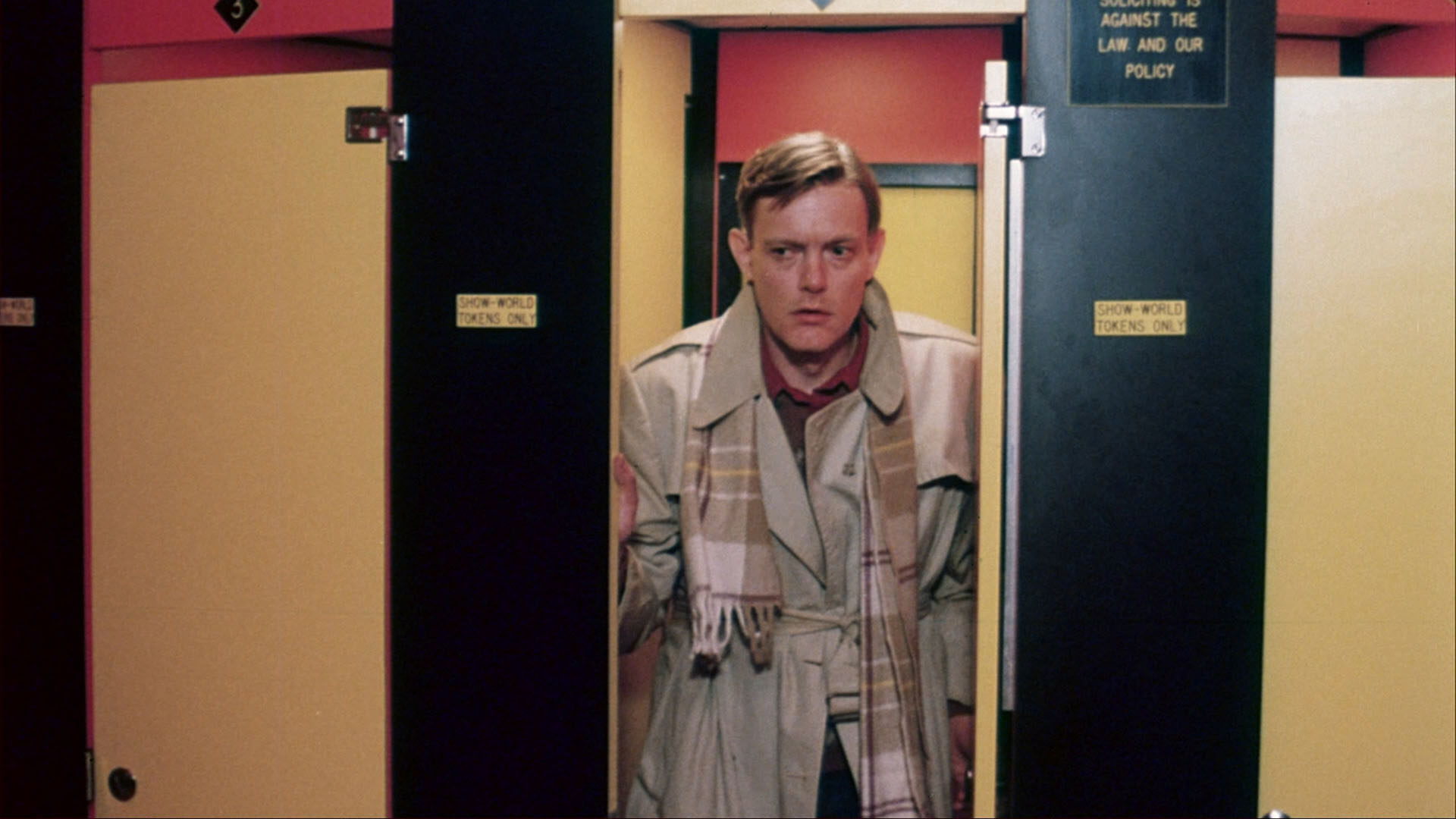
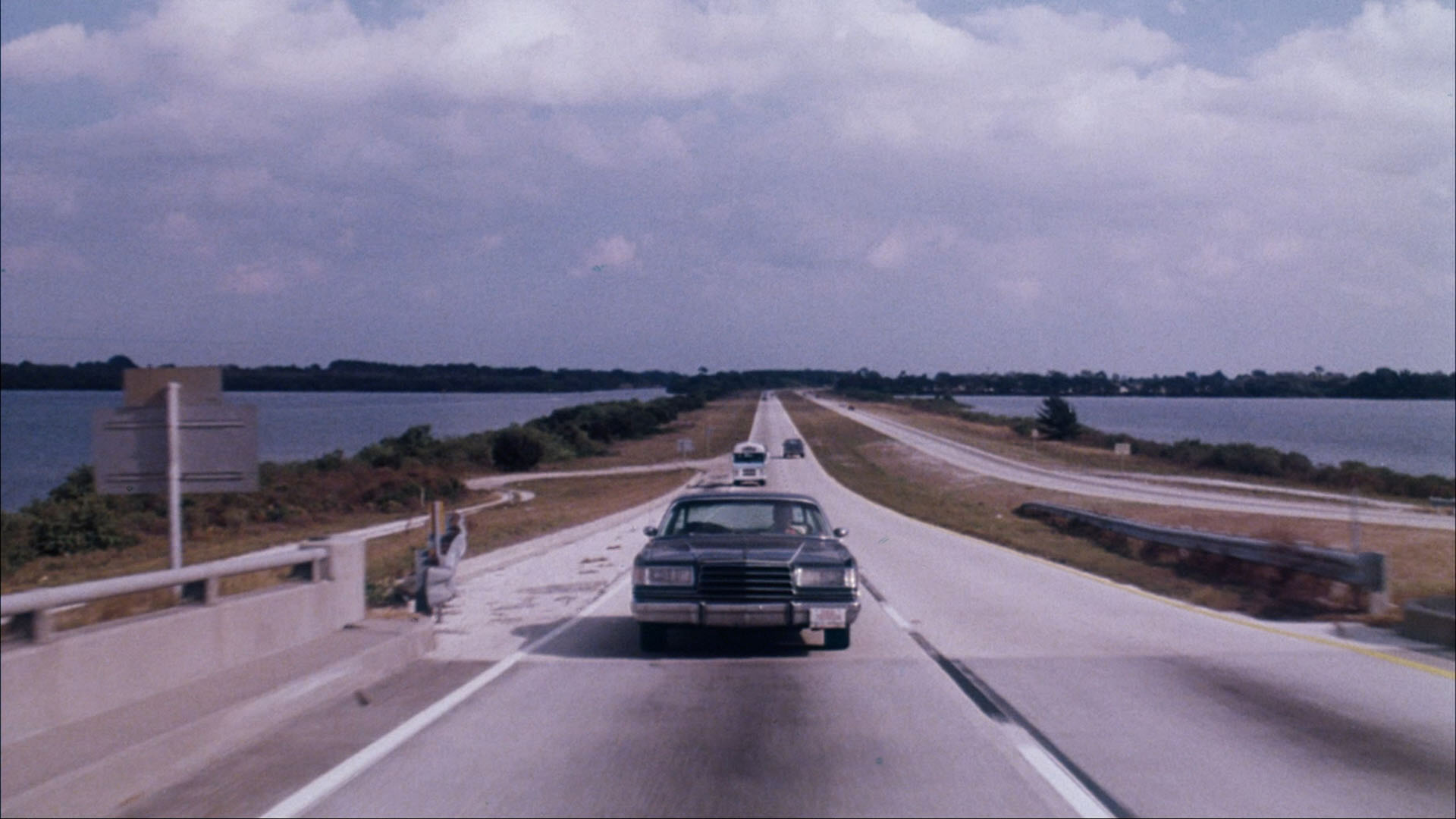
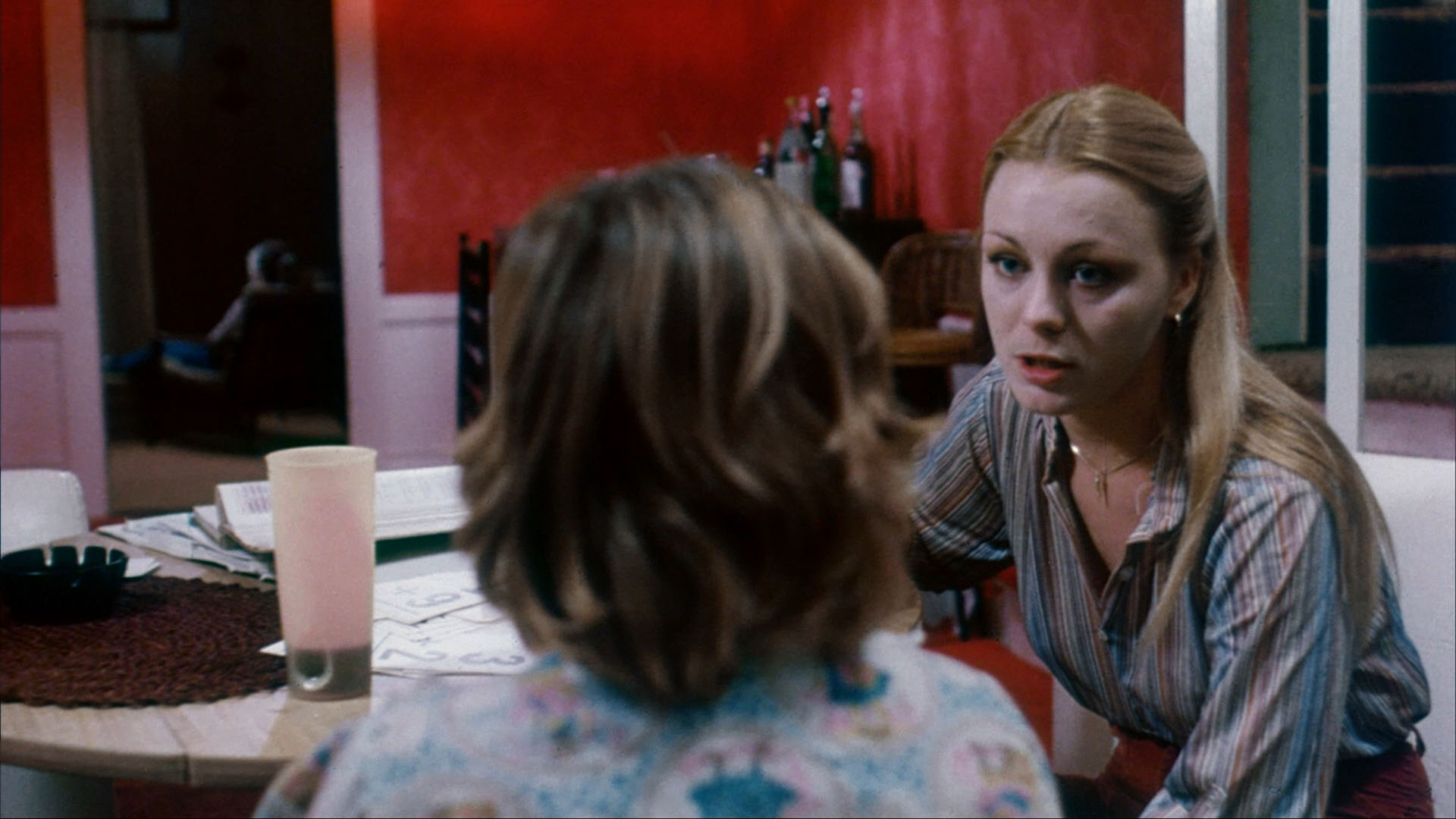
Updated review on June 2, 2023.





 kind of film no one would ever believe actually played in mainstream theaters in the
kind of film no one would ever believe actually played in mainstream theaters in the  early '80s, Nightmare is one of the more infamous unrated gore films released in the wake of George Romero's successful Dawn of the Dead. Bill Lustig's Maniac cleaned up in 1980 thanks to its vicious Tom Savini effects, so the following year (alongside fare like The Prowler and The Burning), lowbrow distributor 21st Century Film Corporation unleashed this sick puppy with Savini's name plastered all over the posters tying him in with Dawn of the Dead and Friday the 13th. Unfortunately, as Savini himself quickly pointed out, he didn't work on the film apart from offering a few tips to the FX guys on the set, so his name was covered up by theater owners reportedly to avoid a lawsuit. The film was later reissued in an R-rated version with some of its nastiest highlights trimmed out, while the subsequent VHS version (complete with a very bloody cover) restored the X-rated violence while losing some incidental dialogue and other footage to fit the feature on a shorter VHS cassette with previews.
early '80s, Nightmare is one of the more infamous unrated gore films released in the wake of George Romero's successful Dawn of the Dead. Bill Lustig's Maniac cleaned up in 1980 thanks to its vicious Tom Savini effects, so the following year (alongside fare like The Prowler and The Burning), lowbrow distributor 21st Century Film Corporation unleashed this sick puppy with Savini's name plastered all over the posters tying him in with Dawn of the Dead and Friday the 13th. Unfortunately, as Savini himself quickly pointed out, he didn't work on the film apart from offering a few tips to the FX guys on the set, so his name was covered up by theater owners reportedly to avoid a lawsuit. The film was later reissued in an R-rated version with some of its nastiest highlights trimmed out, while the subsequent VHS version (complete with a very bloody cover) restored the X-rated violence while losing some incidental dialogue and other footage to fit the feature on a shorter VHS cassette with previews.  God, this movie is so, so filthy. The gore scenes are mostly unconvincing and the sex couldn't be more unsavory (including a pivotal kinky flashback no viewer has ever forgotten), but that hardly matters when the end product still feels so grimy and unhealthy from the opening frames. You'll want to keep a Costco-sized vat of Purel handy while viewing this thing, but at least there's a hefty vein of unintentional comedy running through it as well thanks to Italian-born director Romano Scavolini's odd view of American culture. (And if you wanna see something almost as trashy, try tracking down his perverse spy thriller from the previous
God, this movie is so, so filthy. The gore scenes are mostly unconvincing and the sex couldn't be more unsavory (including a pivotal kinky flashback no viewer has ever forgotten), but that hardly matters when the end product still feels so grimy and unhealthy from the opening frames. You'll want to keep a Costco-sized vat of Purel handy while viewing this thing, but at least there's a hefty vein of unintentional comedy running through it as well thanks to Italian-born director Romano Scavolini's odd view of American culture. (And if you wanna see something almost as trashy, try tracking down his perverse spy thriller from the previous  year, Savage Hunt.) None of the mental health professionals behave like anything found in English-speaking society, and the police procedures were apparently pulled from the same playbook as Pieces (which, come to think of it, would make a great co-feature). And like another famous slasher film, When a Stranger Calls, it's oddly structured and basically drops dead for the entire midsection, which turns into a wacko domestic drama ramping up for a very long time before the eventual bloody payoff. The slasher setup itself tries and tries to emulate Halloween, of course, but the end result is much more H.G. Lewis than John Carpenter... which isn't a bad thing at all if your expectations are calibrated correctly.
year, Savage Hunt.) None of the mental health professionals behave like anything found in English-speaking society, and the police procedures were apparently pulled from the same playbook as Pieces (which, come to think of it, would make a great co-feature). And like another famous slasher film, When a Stranger Calls, it's oddly structured and basically drops dead for the entire midsection, which turns into a wacko domestic drama ramping up for a very long time before the eventual bloody payoff. The slasher setup itself tries and tries to emulate Halloween, of course, but the end result is much more H.G. Lewis than John Carpenter... which isn't a bad thing at all if your expectations are calibrated correctly. slightly bumpy reel change here and there, it's very pleasing and actually looks much cleaner, brighter, and more colorful than the initial theatrical
slightly bumpy reel change here and there, it's very pleasing and actually looks much cleaner, brighter, and more colorful than the initial theatrical  prints, which looked like they were projected through dirty dishwater. Interestingly, this version also contains more image information than the other two versions, including some particularly dirty details during the peepshow booth scene that are difficult to overlook. The best of the extras is still found on disc one, though, an audio commentary for the widescreen 2005 version featuring Stafford and make-up artist Cleve Hall with moderators Lee Christian and David DeCoteau. It's a wildly entertaining chat track with lots of great trivia about the making of the film including the personal stories of the various actors, the shoot's difficult transitions between the Big Apple and Florida, and the ins and outs of working with Scavolini before the film's fiery theatrical history. Some of the same ground is covered from a different perspective with both participants in the 17-minute "Making of Nightmare" featurette, which also adds in distributor Tom Ward from 21st Century for more of a look at the film's place in the spectrum of early '80s horror and its turbulent reception. FX artist Edward French (who went on to a Hollywood career) adds some facts about the Savini controversy (as do the other extras) and offers his own views on crafting the extreme gore found on screen. The second disc has one enormous but kind of bewildering supplement, a 95-minute unedited interview with Scavolini in Italian without subtitles. Anyone familiar with his extremely, ahem, colorful interview in the bizarre 1996 book Spaghetti Nightmares should be able to glean what he's talking about here. Incidentally, Scavolini had earlier helmed another much more elegant horror film in 1972, Spirits of Death (Un bianco vestito per Marialé), whose essential DVD release also has a great interview with the colorful auteur. Other extras on the second disc include two Nightmare theatrical trailers from the American release and a handful of bonus Code Red promos including another notorious gore film of a very different kind, Cut-Throats Nine.
prints, which looked like they were projected through dirty dishwater. Interestingly, this version also contains more image information than the other two versions, including some particularly dirty details during the peepshow booth scene that are difficult to overlook. The best of the extras is still found on disc one, though, an audio commentary for the widescreen 2005 version featuring Stafford and make-up artist Cleve Hall with moderators Lee Christian and David DeCoteau. It's a wildly entertaining chat track with lots of great trivia about the making of the film including the personal stories of the various actors, the shoot's difficult transitions between the Big Apple and Florida, and the ins and outs of working with Scavolini before the film's fiery theatrical history. Some of the same ground is covered from a different perspective with both participants in the 17-minute "Making of Nightmare" featurette, which also adds in distributor Tom Ward from 21st Century for more of a look at the film's place in the spectrum of early '80s horror and its turbulent reception. FX artist Edward French (who went on to a Hollywood career) adds some facts about the Savini controversy (as do the other extras) and offers his own views on crafting the extreme gore found on screen. The second disc has one enormous but kind of bewildering supplement, a 95-minute unedited interview with Scavolini in Italian without subtitles. Anyone familiar with his extremely, ahem, colorful interview in the bizarre 1996 book Spaghetti Nightmares should be able to glean what he's talking about here. Incidentally, Scavolini had earlier helmed another much more elegant horror film in 1972, Spirits of Death (Un bianco vestito per Marialé), whose essential DVD release also has a great interview with the colorful auteur. Other extras on the second disc include two Nightmare theatrical trailers from the American release and a handful of bonus Code Red promos including another notorious gore film of a very different kind, Cut-Throats Nine.  a few flecks here and there. The DTS-HD mono audio sounds solid as well. As for extras, you get the Stafford/Hall/Christian/DeCoteau commentary, the making-of featurette, the long version of the theatrical trailer, the Ed French featurette, and in a nice
a few flecks here and there. The DTS-HD mono audio sounds solid as well. As for extras, you get the Stafford/Hall/Christian/DeCoteau commentary, the making-of featurette, the long version of the theatrical trailer, the Ed French featurette, and in a nice  touch, the Scavolini interview with - yes! - English subtitles at last ("subtitled by cult icon Damon Packard"). On top of that there are also two new interviews, starting with an 8-minute featurette with producer Bill Milling (who stepped in front of the camera to play the bearded psychiatrist). He goes over the grueling 12-day shoot without breaks, the reason his part kept getting bigger, and the fun working habits of Scavolini on the set. Then there's a new 11-minute interview with Mik Cribben, who worked as the unit production manager and wound up stepping in as the bandanna-wearing, ostensible good guy in the film. Once again it's a fun, candid perspective on the film covering tension between Scavolini and the producers, the Florida shooting, acting in his skivvies, backstage drama with people getting shuffled around and fired, and a somewhat jumbled account of the whole poster controversy.
touch, the Scavolini interview with - yes! - English subtitles at last ("subtitled by cult icon Damon Packard"). On top of that there are also two new interviews, starting with an 8-minute featurette with producer Bill Milling (who stepped in front of the camera to play the bearded psychiatrist). He goes over the grueling 12-day shoot without breaks, the reason his part kept getting bigger, and the fun working habits of Scavolini on the set. Then there's a new 11-minute interview with Mik Cribben, who worked as the unit production manager and wound up stepping in as the bandanna-wearing, ostensible good guy in the film. Once again it's a fun, candid perspective on the film covering tension between Scavolini and the producers, the Florida shooting, acting in his skivvies, backstage drama with people getting shuffled around and fired, and a somewhat jumbled account of the whole poster controversy. upset.
upset.  Extras here are completely different, so to put it simply, slasher films will simply want to have both releases in their collections. Associate producer Bill Paul provides a new audio commentary about working with the Italian director, handling the location shifts between New York and Florida, and coordinating the very messy gore effects with the occasional participation of child actors; it's a solid alternate history compared to the older one. A brief 3-minute interview with 21st Century Films CEO Tom Ward is a thumbnail sketch of the film's controversial theatrical release in the US with bit about the special effects dispute, and "Terror in Times Square" features former Fangoria editors Mike Gingold and Tony Timpone guiding you through the radically changed areas where the opening scenes were shot. Scavolini and Stafford are covered in the insert booklet via print interviews.
Extras here are completely different, so to put it simply, slasher films will simply want to have both releases in their collections. Associate producer Bill Paul provides a new audio commentary about working with the Italian director, handling the location shifts between New York and Florida, and coordinating the very messy gore effects with the occasional participation of child actors; it's a solid alternate history compared to the older one. A brief 3-minute interview with 21st Century Films CEO Tom Ward is a thumbnail sketch of the film's controversial theatrical release in the US with bit about the special effects dispute, and "Terror in Times Square" features former Fangoria editors Mike Gingold and Tony Timpone guiding you through the radically changed areas where the opening scenes were shot. Scavolini and Stafford are covered in the insert booklet via print interviews.  peep show sequence, which delivers exactly what you'd expect. A 1m18s selection of deleted footage highlights two brief snippets in the Dutch and Australian VHS releases from an alternate edit of the film that apparently no longer exists on
peep show sequence, which delivers exactly what you'd expect. A 1m18s selection of deleted footage highlights two brief snippets in the Dutch and Australian VHS releases from an alternate edit of the film that apparently no longer exists on  film. Finally you get a 10m14s gallery of stills and promotional art, plus two trailers (with and without the Savini credit).
film. Finally you get a 10m14s gallery of stills and promotional art, plus two trailers (with and without the Savini credit).




![]()